Fallout Summaries and backstories
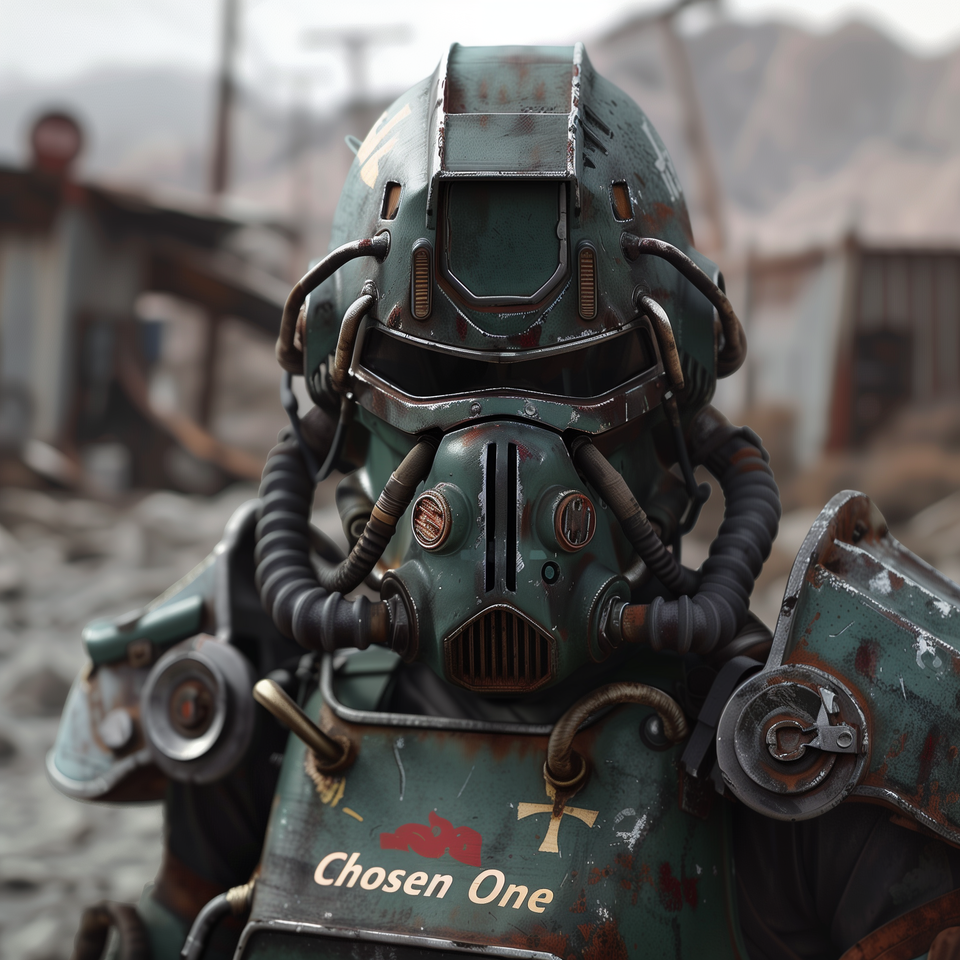
The Fallout series was adapted into a TV show by Amazon Studios, in collaboration with Bethesda Game Studios, Bethesda Softworks, and Kilter Films. The show was first announced in July 2020, and it generated a lot of excitement among fans of the video game series.
The show was developed by Lisa Joy and Jonathan Nolan, the creators of the hit HBO series "Westworld." The duo served as executive producers alongside Athena Wickham, Todd Howard (director and executive producer at Bethesda Game Studios), and James Altman (director of publishing operations at Bethesda Softworks).

While details about the plot and setting of the TV adaptation were initially scarce, the official announcement stated that the series would be a "harsh and merciless, and sometimes quite funny" look at the Fallout universe, staying true to the game's darkly humorous tone and post-apocalyptic setting.
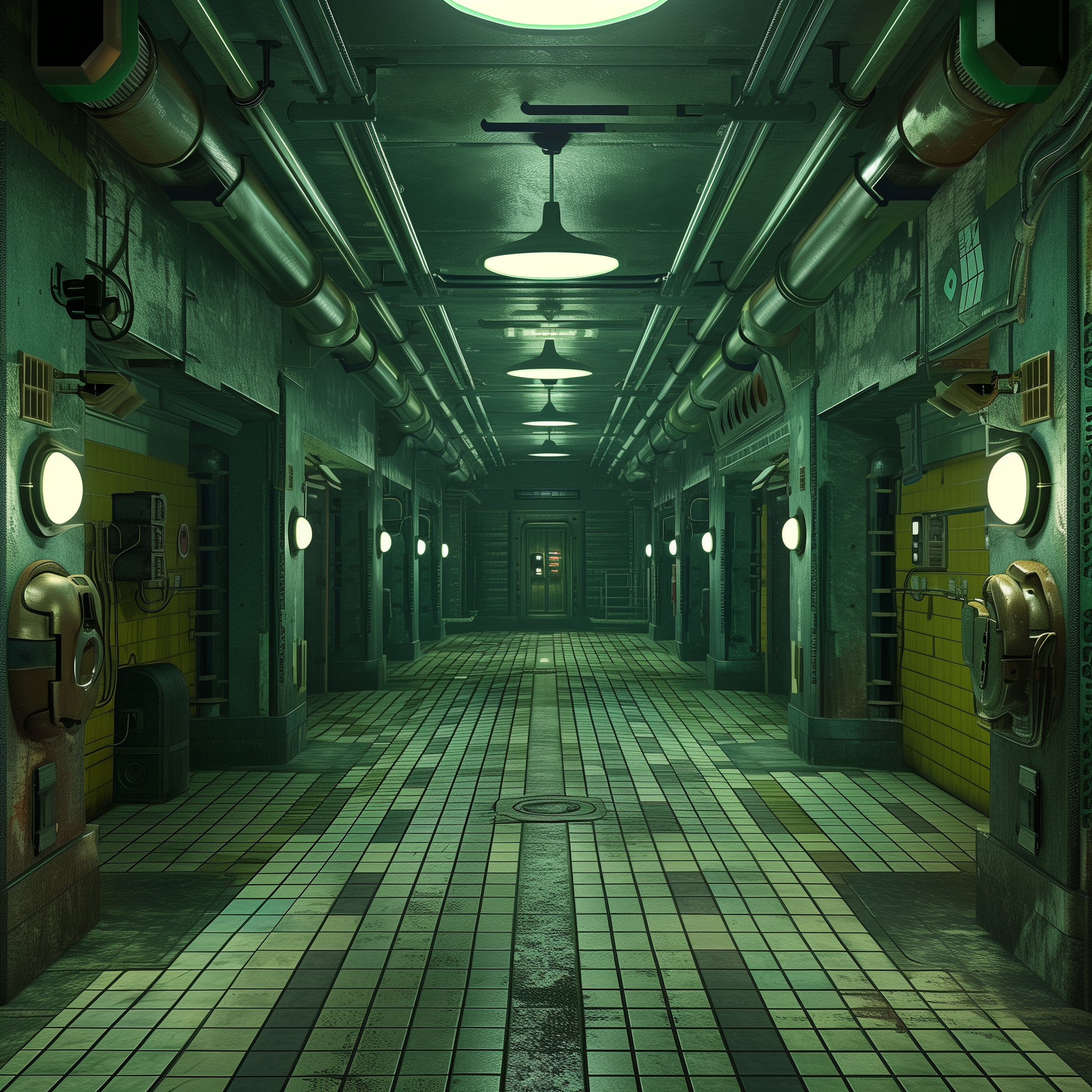
The Fallout TV series had the potential to be an amazing adaptation for several reasons:
1. Rich source material: The Fallout games offered a vast, detailed universe filled with fascinating lore, memorable characters, and compelling storylines that could be adapted and expanded upon for television.
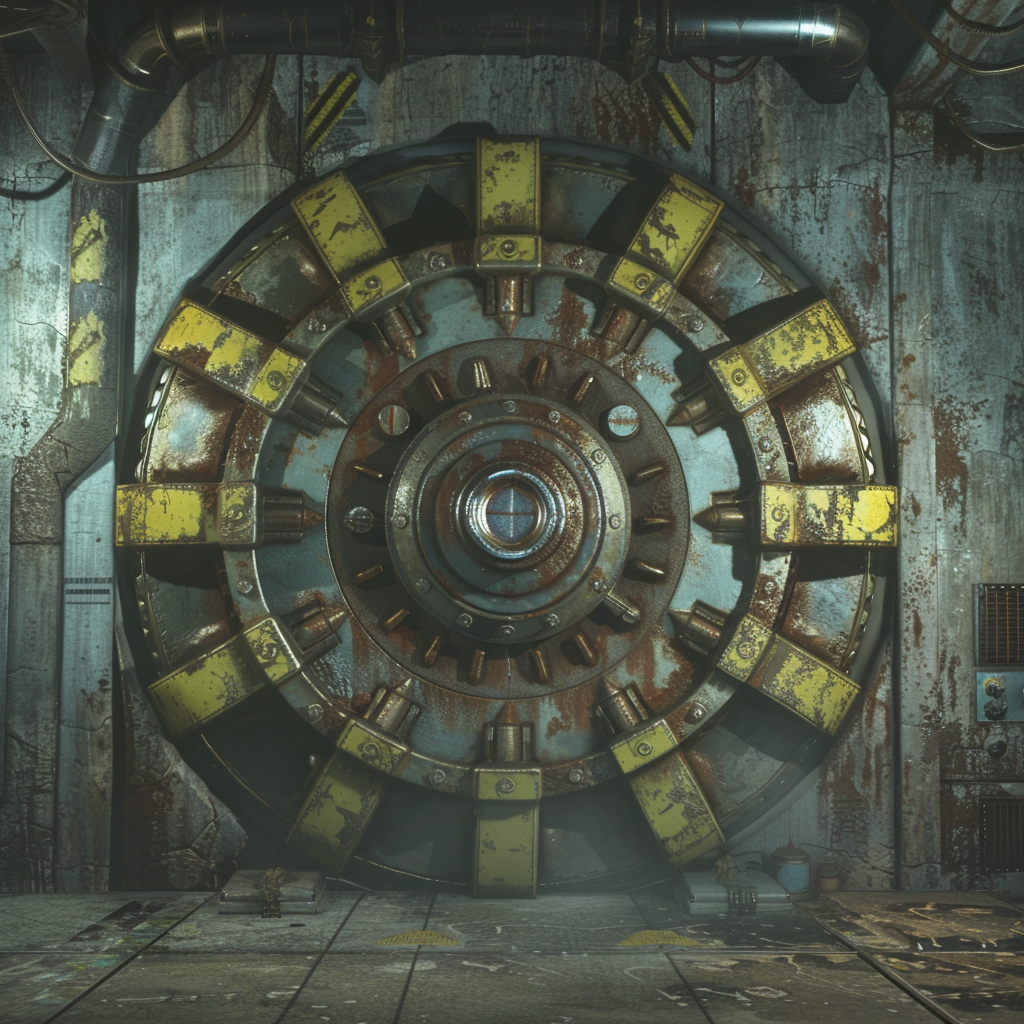
2. Experienced creative team: With Lisa Joy and Jonathan Nolan at the helm, the series was in the hands of talented and experienced creators who had a proven track record of creating high-quality, thought-provoking science fiction television.
3. Collaboration with Bethesda: The involvement of key figures from Bethesda Game Studios and Bethesda Softworks ensured that the adaptation remained faithful to the spirit and essence of the Fallout games.
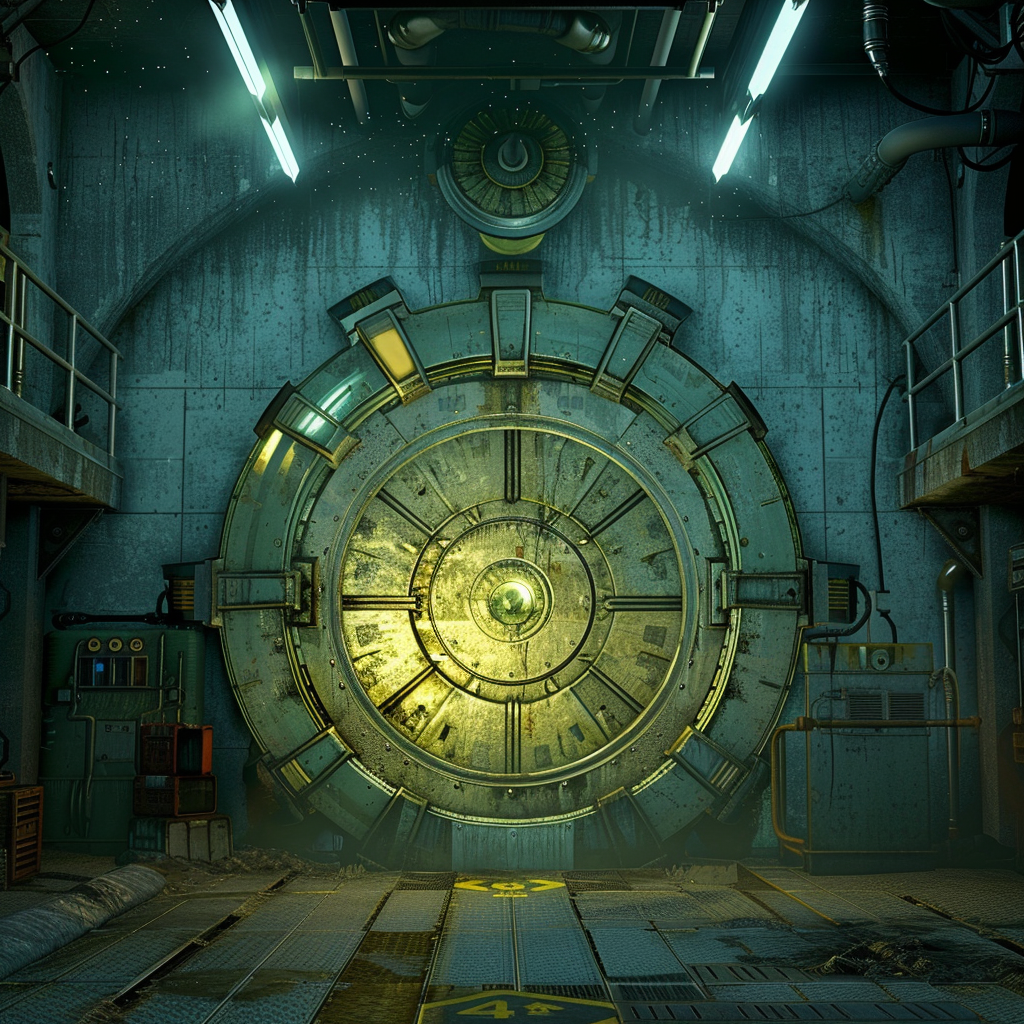
4. High production value: Amazon Studios was known for investing in high-quality, big-budget productions, which boded well for the Fallout series in terms of visual effects, set design, and overall production value.
5. Growing popularity of video game adaptations: The success of recent video game adaptations, such as "The Witcher" and "Arcane," had demonstrated that there was a significant appetite for well-crafted TV shows based on beloved gaming franchises.
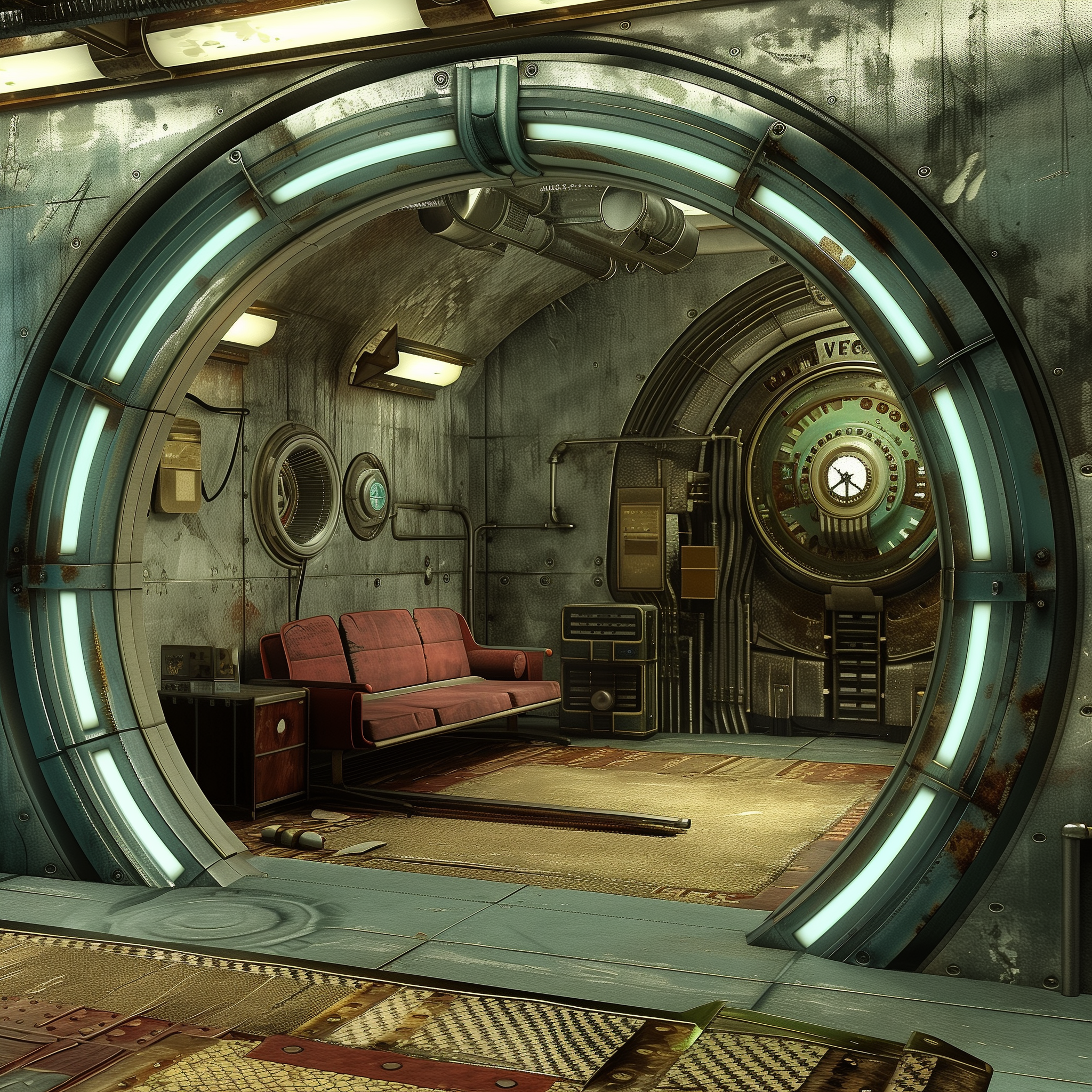
As the Fallout TV series aired in 2024, fans were excited to see how the unique blend of post-apocalyptic science fiction, dark humor, and social commentary was brought to life on the small screen. The series aimed to capture the essence of the games while bringing something new and exciting to the world of television.
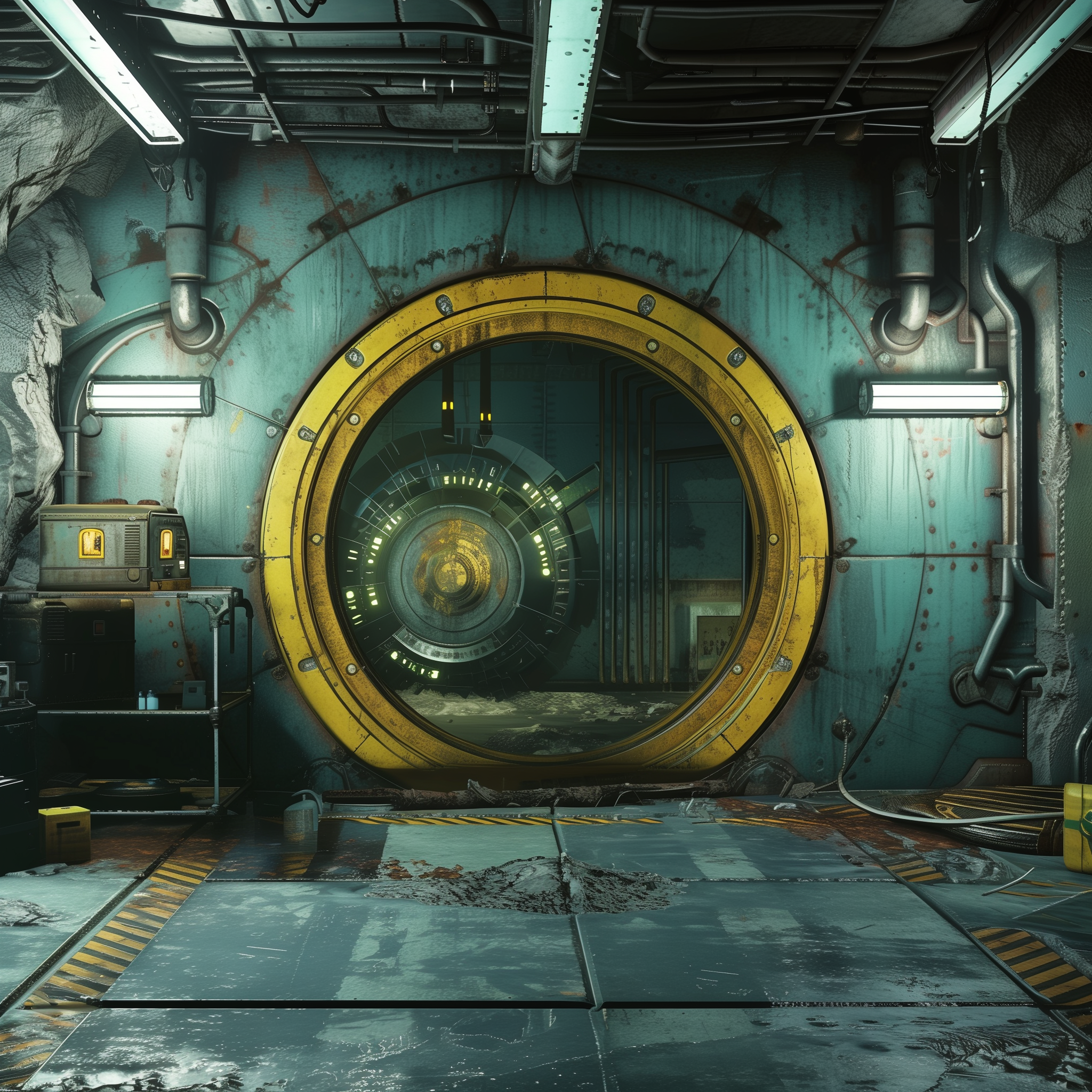
The Fallout universe draws heavily from the real-world history of the Cold War era, particularly the tensions between the United States and the Soviet Union, as well as the fear of nuclear annihilation that permeated much of the latter half of the 20th century. The game's setting is a retro-futuristic version of America, where the technology and aesthetics of the 1950s have persisted well into the 21st century.

In this alternate timeline, the United States became increasingly isolationist and paranoid, leading to a greater emphasis on self-sufficiency and a distrust of outsiders. This mindset allowed corporations like Vault-Tec, RobCo Industries, and General Atomics to gain unprecedented power and influence, as they positioned themselves as the guardians of America's future.
These corporations bear similarities to real-world monopolies and defense contractors that emerged during the Cold War, such as IBM, Lockheed Martin, and General Electric. Like their Fallout counterparts, these companies often had close ties to the government and were involved in the development of cutting-edge technologies, including those related to nuclear weapons and defense systems.
The enemy in the Fallout universe is not clearly defined, as the games explore the moral ambiguity and complexity of a post-apocalyptic world. While the Soviet Union and China are mentioned as rival superpowers, the true enemy seems to be the unchecked power of corporations and the dangerous ideologies they promote.
Throughout the series, it becomes clear that the Great War was not simply the result of international tensions, but rather the inevitable outcome of a society that had become increasingly militarized, paranoid, and dependent on unsustainable technologies. The corporations that had promised to protect and serve the American people were, in fact, the architects of their destruction.
This theme of self-created apocalypse is a recurring one in the Fallout series. The Vaults, which were marketed as safe havens from nuclear war, were actually designed as cruel social experiments, testing the limits of human endurance and psychology. The FEV (Forced Evolutionary Virus) that created the Super Mutants was developed by the pre-war government as a potential weapon, only to backfire and create a new threat to humanity.
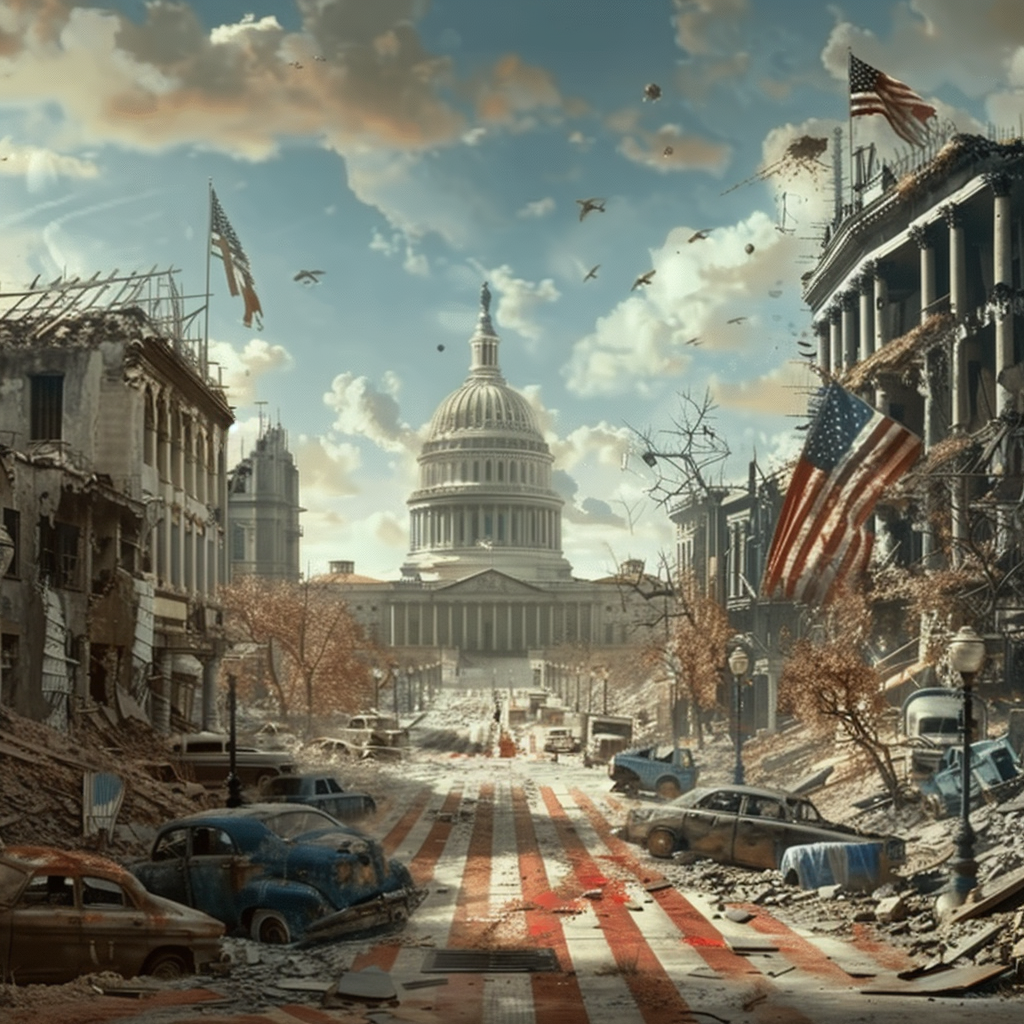
The Fallout universe can be seen as a critique of unchecked capitalism, militarism, and the dangers of blind faith in technology. It explores the consequences of allowing corporations to gain too much power and influence, and the risks of prioritizing short-term gains over long-term sustainability.
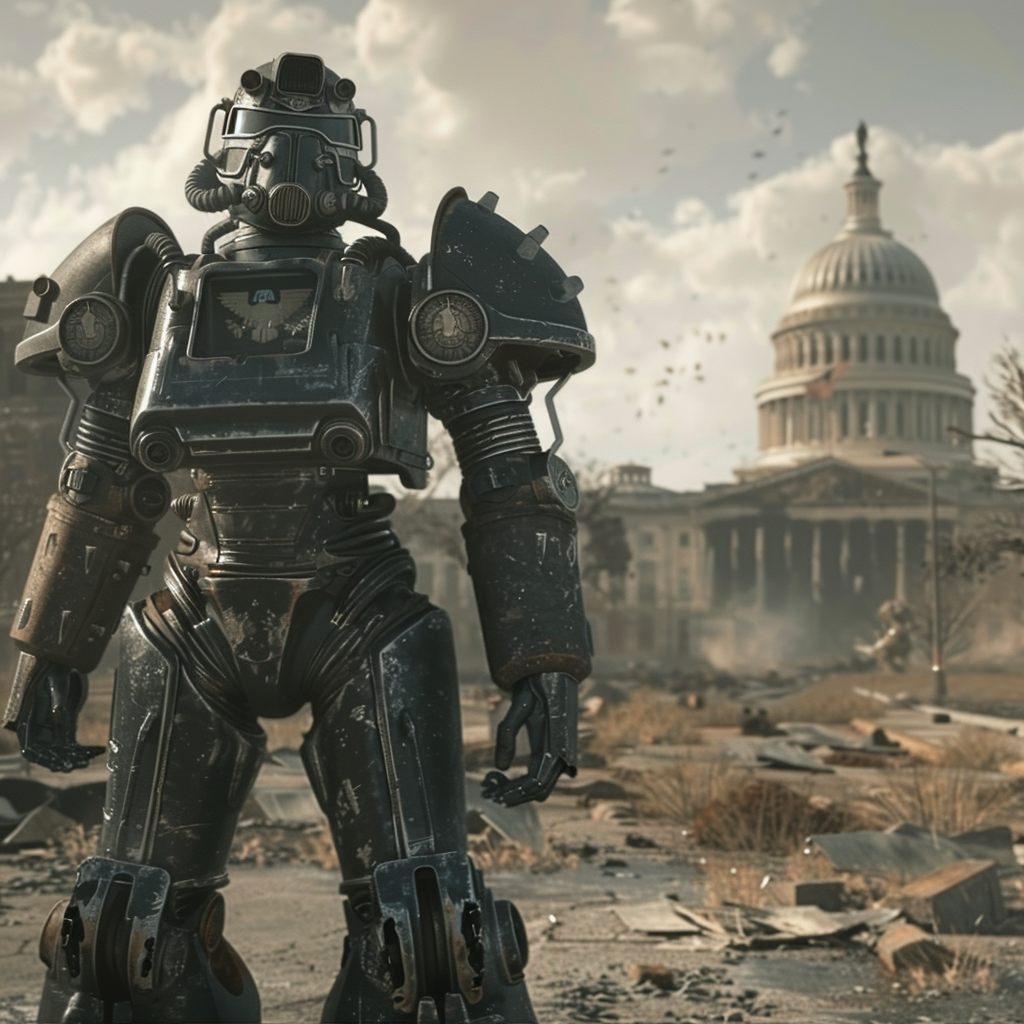
By drawing parallels to real-world events and fears, such as the Vietnam War, the Cold War, and the looming threat of nuclear war, Fallout creates a compelling and thought-provoking setting that reflects the anxieties and challenges of our own time. The game's bleak, post-apocalyptic world serves as a warning of what could happen if we allow our fears and desires to be manipulated by those who seek to profit from them, and the importance of remaining vigilant against the misuse of power and technology.
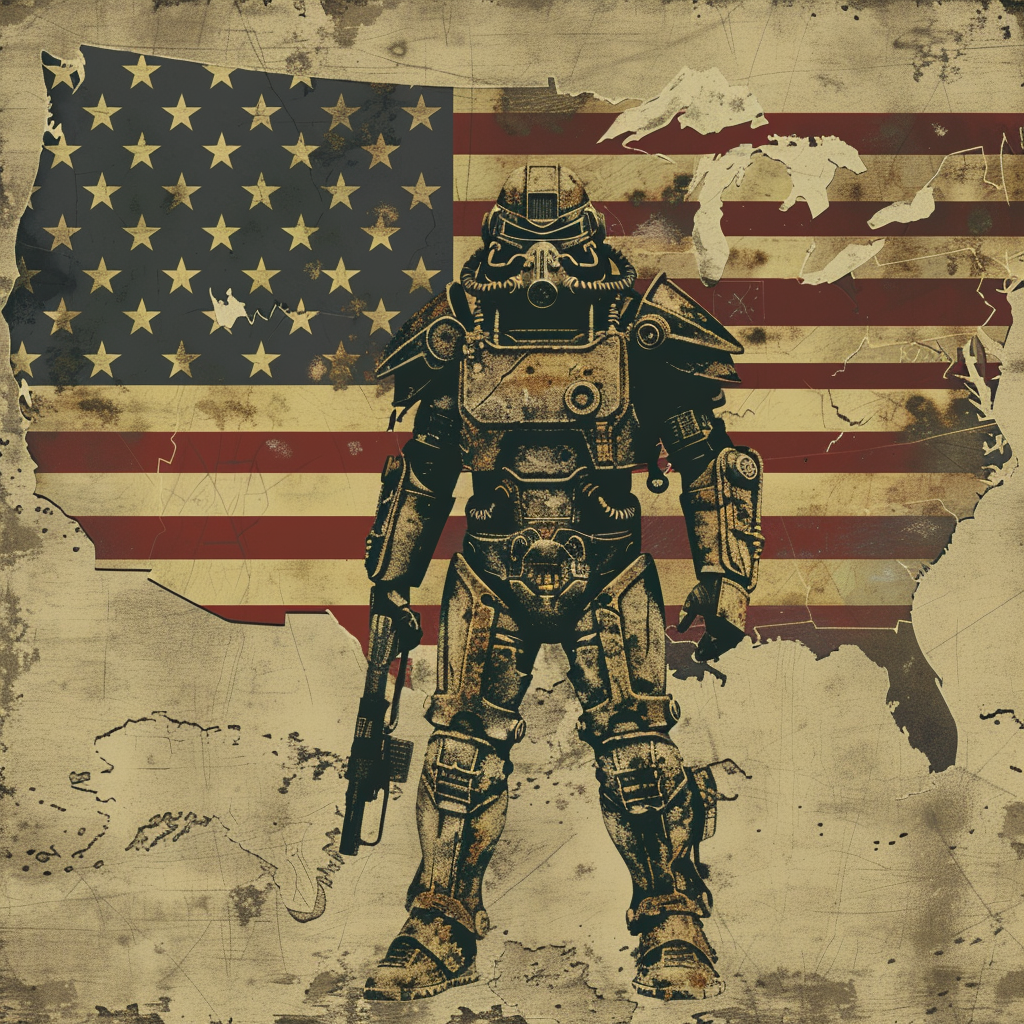
The Pip-Boy, or Personal Information Processor, is a wrist-mounted computer device that has become an iconic piece of technology in the Fallout universe. Developed by RobCo Industries before the Great War, the Pip-Boy was designed to be a multipurpose tool for both civilian and military use.
The original concept of the Pip-Boy was to create a portable device that could manage and organize an individual's daily life, providing access to important information, communication, and entertainment. However, as RobCo Industries became more intertwined with the U.S. government and Vault-Tec Corporation, the Pip-Boy's purpose evolved to align with their goals of control and social engineering.
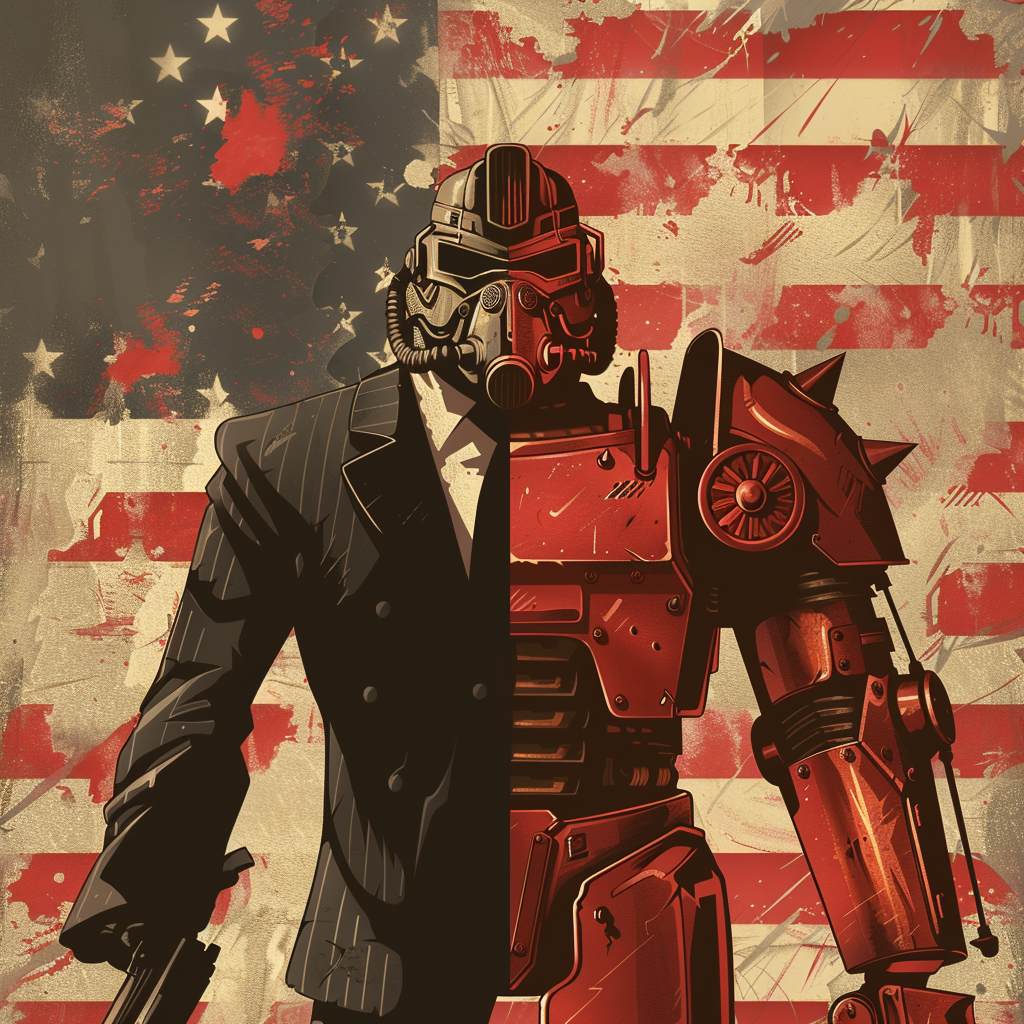
RobCo Industries, led by the brilliant but ruthless Robert House, saw the Pip-Boy as a means to gather data on its users and exert influence over their lives. By making the device an integral part of everyday life, RobCo could monitor the habits, preferences, and even the physical well-being of Pip-Boy users. This information could then be used to manipulate consumer behavior, shape public opinion, and maintain corporate dominance.
The mascot of the Pip-Boy, known as Vault Boy, was created as a friendly and approachable face for the device. With his blonde hair, blue eyes, and cheerful demeanor, Vault Boy was designed to be the perfect representation of the ideal American citizen. His image was used extensively in Vault-Tec's advertising and educational materials, promoting the idea that life in a Vault was not only safe but also fun and fulfilling.

However, beneath this cheerful exterior, Vault Boy served as a subtle reminder of the power that corporations like RobCo and Vault-Tec held over the American people. By presenting themselves as the guardians of humanity's future, these companies were able to justify their increasingly invasive and unethical practices, all in the name of progress and survival.
As the Great War approached, the Pip-Boy became an essential tool for those selected to enter the Vaults. It served as a means of monitoring and controlling the Vault Dwellers, ensuring that they adhered to the strict rules and regulations set forth by Vault-Tec. In many cases, the Pip-Boy was also used to facilitate the various social experiments conducted within the Vaults, gathering data on the inhabitants' responses to stress, deprivation, and psychological manipulation.
In the post-apocalyptic world, the Pip-Boy remains a valuable tool for survivors, providing them with access to maps, inventory management, and vital health information. However, its origins as a tool of corporate control and social engineering serve as a haunting reminder of the dark forces that helped shape the world of Fallout.

The Pip-Boy and its mascot, Vault Boy, embody the complex themes of power, control, and the misuse of technology that are central to the Fallout universe. They serve as a cautionary tale about the dangers of unchecked corporate influence and the importance of remaining vigilant against those who would seek to manipulate and control us through the tools we rely on.
Here is a chart mapping out the major corporations in the Fallout video game series universe, focusing on those that existed both before and after the Great War. The information is based on the lore available up to August 2023:
1. Vault-Tec Corporation
- Pre-War: Contracted by the U.S. government to build fallout shelters (Vaults) for the populace.
- Post-War: Most Vaults were actually social experiments; some survivors and technology remained.

2. RobCo Industries
- Pre-War: Major robotics and computer corporation; created Protectrons, Eyebots, and more.
- Post-War: Technology and robots still found in the wasteland; some facilities still operational.
3. General Atomics International
- Pre-War: Created advanced technologies like the Mister Handy robot and the Pip-Boy.
- Post-War: Products still widely used; some factories and technology survive.

4. Nuka-Cola Corporation
- Pre-War: Major soft drink manufacturer; created Nuka-Cola and its variants.
- Post-War: Bottles and vending machines still found; some factories remain operational.
5. Poseidon Energy
- Pre-War: Energy conglomerate that owned oil rigs, refineries, and power plants.
- Post-War: Some oil rigs and power plants still function; technology and resources sought after.
6. West Tek
- Pre-War: Defense contractor and research facility; created the Forced Evolutionary Virus (FEV).
- Post-War: Research and experiments continued in some facilities; Super Mutants created.
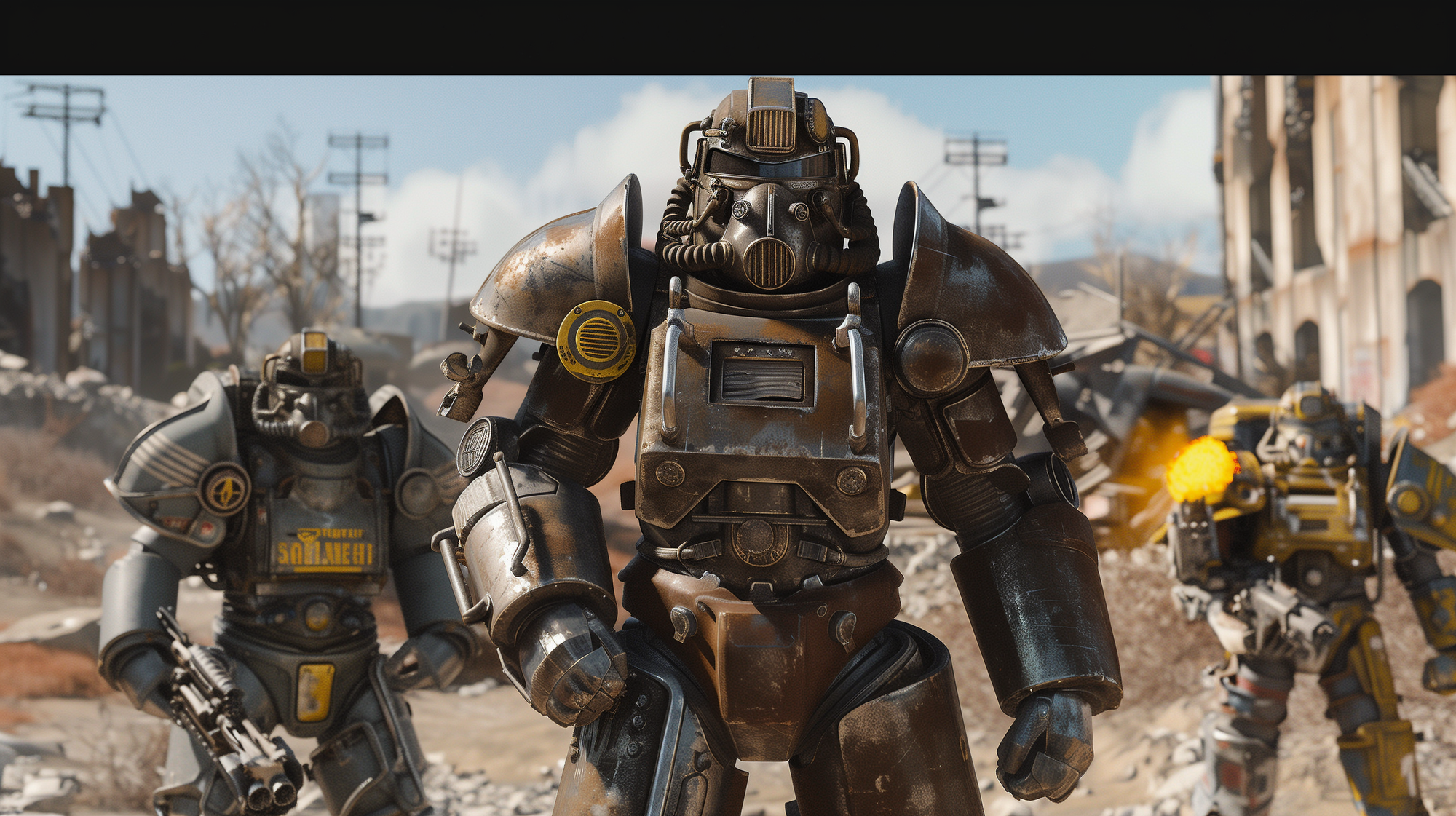
7. Med-Tek
- Pre-War: Biomedical company that developed pharmaceuticals and medical technologies.
- Post-War: Some research facilities still operational; medical supplies sought after.
8. Gunners
- Post-War: Mercenary group that operates in the Commonwealth; well-organized and equipped.
9. Talon Company
- Post-War: Mercenary group in the Capital Wasteland; known for their combat armor and weapons.
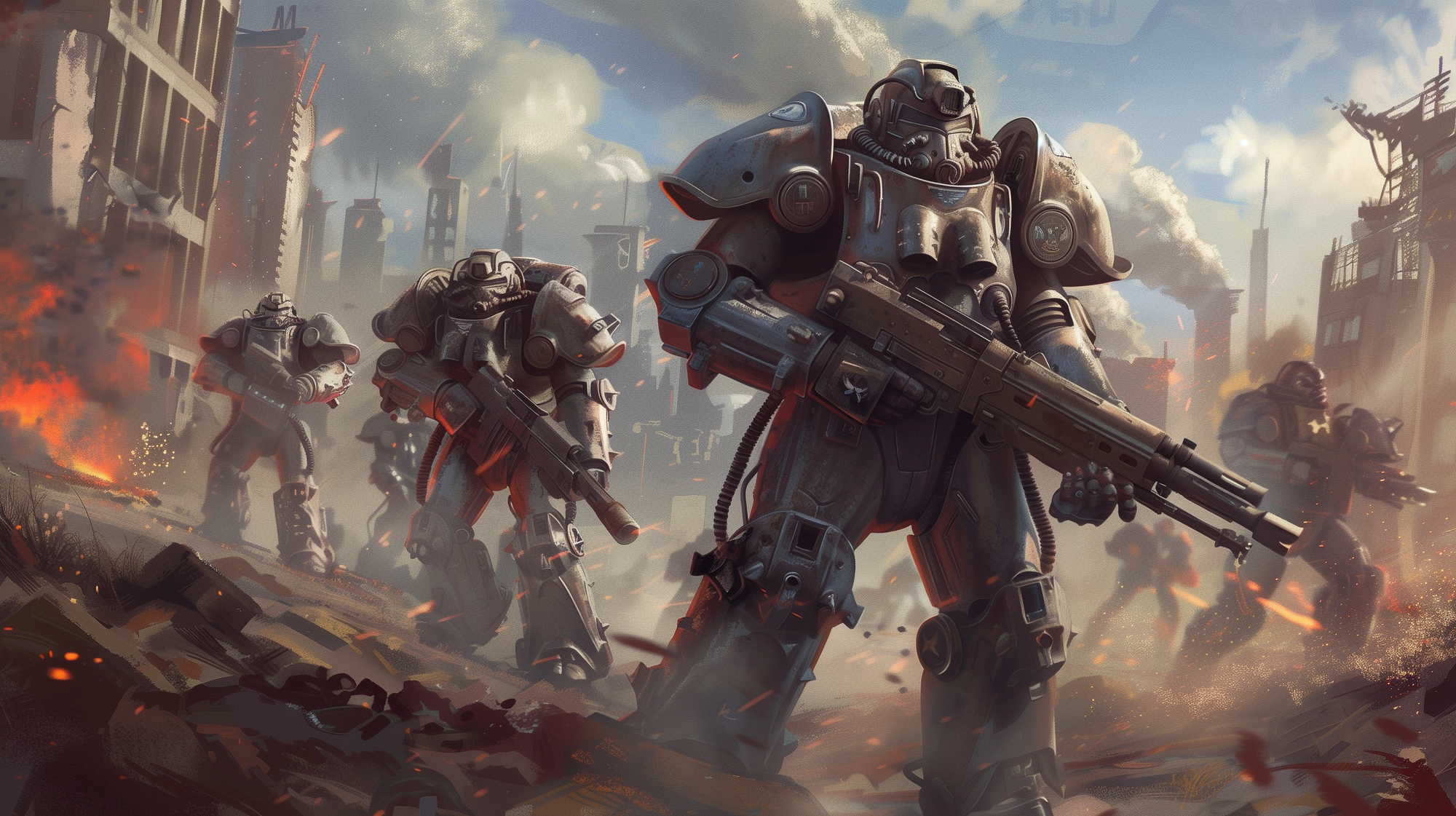
Potential collaborations and conspiracies:
- Vault-Tec, RobCo, and General Atomics may have collaborated on advanced technologies for the Vaults.
- West Tek and the U.S. government were involved in the development of the FEV and other experiments.
- Poseidon Energy and Nuka-Cola could have partnered on resource management and distribution.
- The Enclave, a powerful post-War organization, likely had ties to many pre-War corporations and the government.
These corporations and their technologies have shaped the Fallout universe both before and after the Great War, with their legacy and artifacts playing a significant role in the post-apocalyptic world.
Here is an expanded chart of the various factions, corporations, and governments in the Fallout universe, including those that emerged after the Great War. Some of these groups are region-specific, while others have a broader presence.

Post-War Factions and Governments:
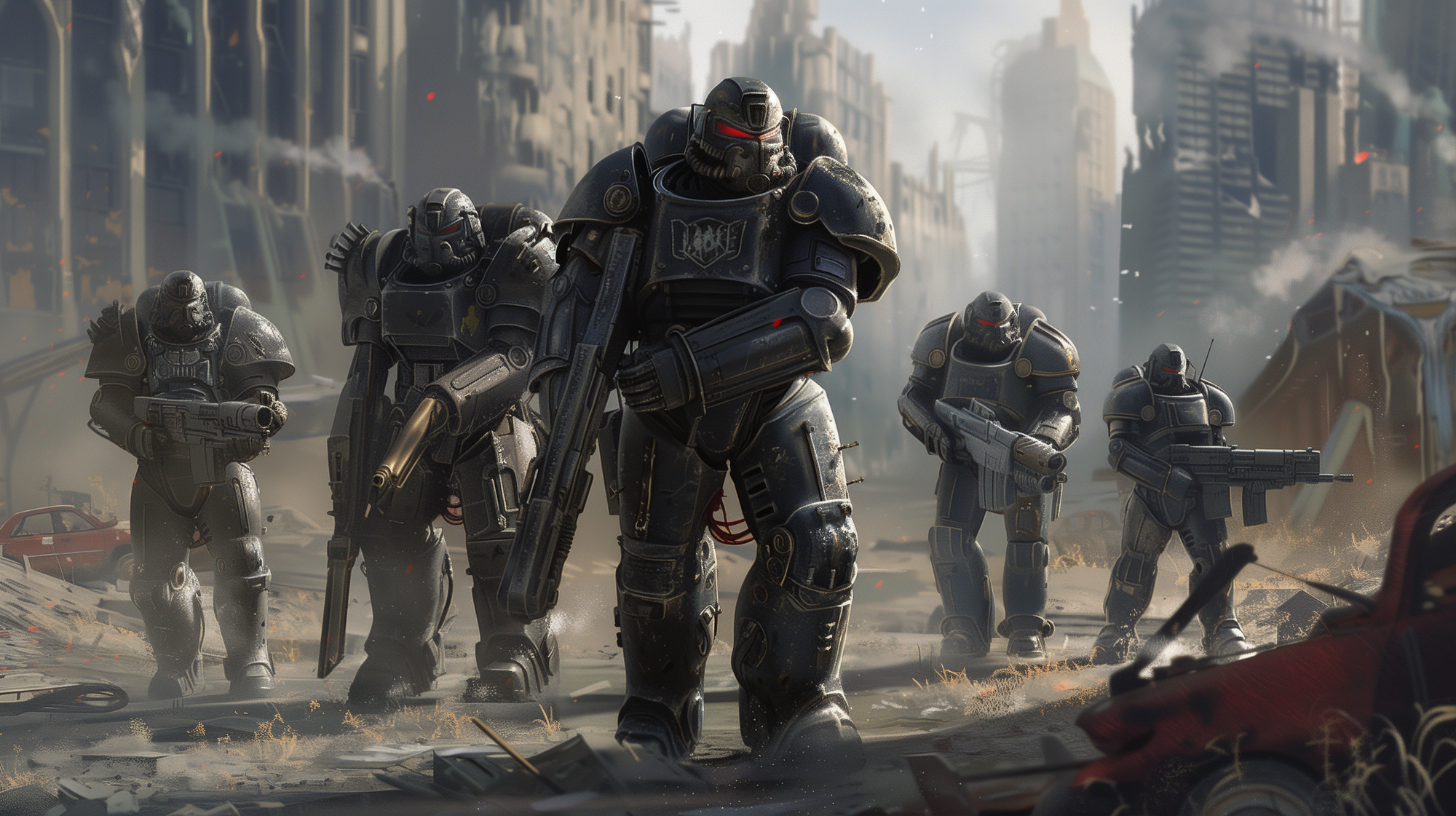
1. The Enclave
- Remnants of the pre-War U.S. government; seeks to restore America under their rule.

2. Brotherhood of Steel
- Tech-hoarding military order; aims to preserve and control advanced technology.
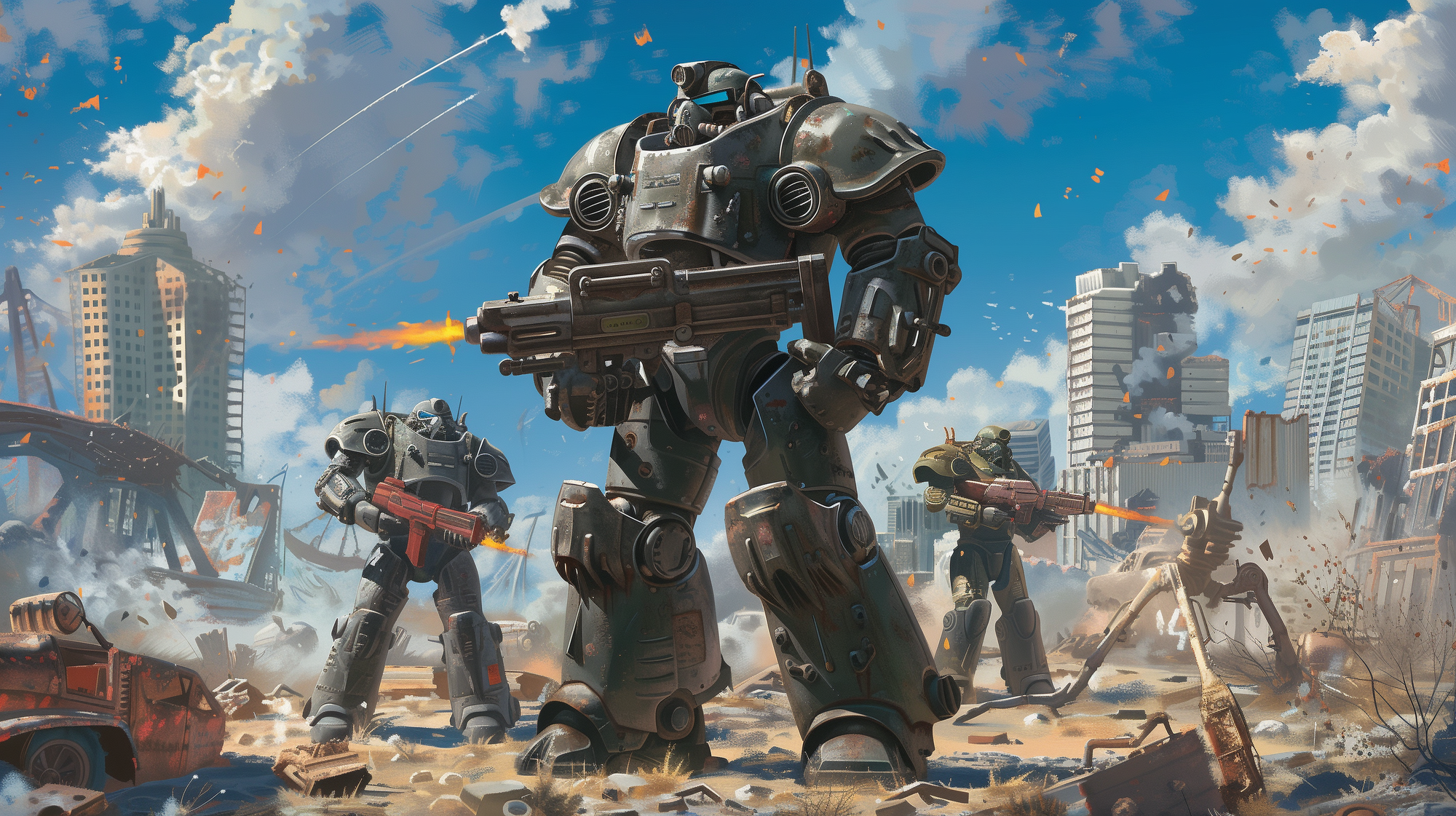
3. The Institute (Commonwealth)
- Advanced scientific organization; creates Synths and conducts experiments.
4. The NCR (New California Republic)
- Large, democratic federation in California; aims to restore old-world values and expand.
5. Caesar's Legion
- Totalitarian slaver society modeled after ancient Rome; located in the Southwest.

6. The Minutemen (Commonwealth)
- Militia group dedicated to protecting settlements and maintaining order.
7. The Railroad (Commonwealth)
- Secret organization that aids and liberates Synths.
8. The Followers of the Apocalypse
- Humanitarian group that seeks to educate and assist wasteland communities.
9. The Children of Atom
- Religious cult that worships radiation and atomic weapons.

10. The Pitt (Pittsburgh)
- Industrial raider city-state known for its brutal slavery and steel production.
11. The Republic of Dave (Capital Wasteland)
- Small, independent "republic" led by the eccentric Dave.
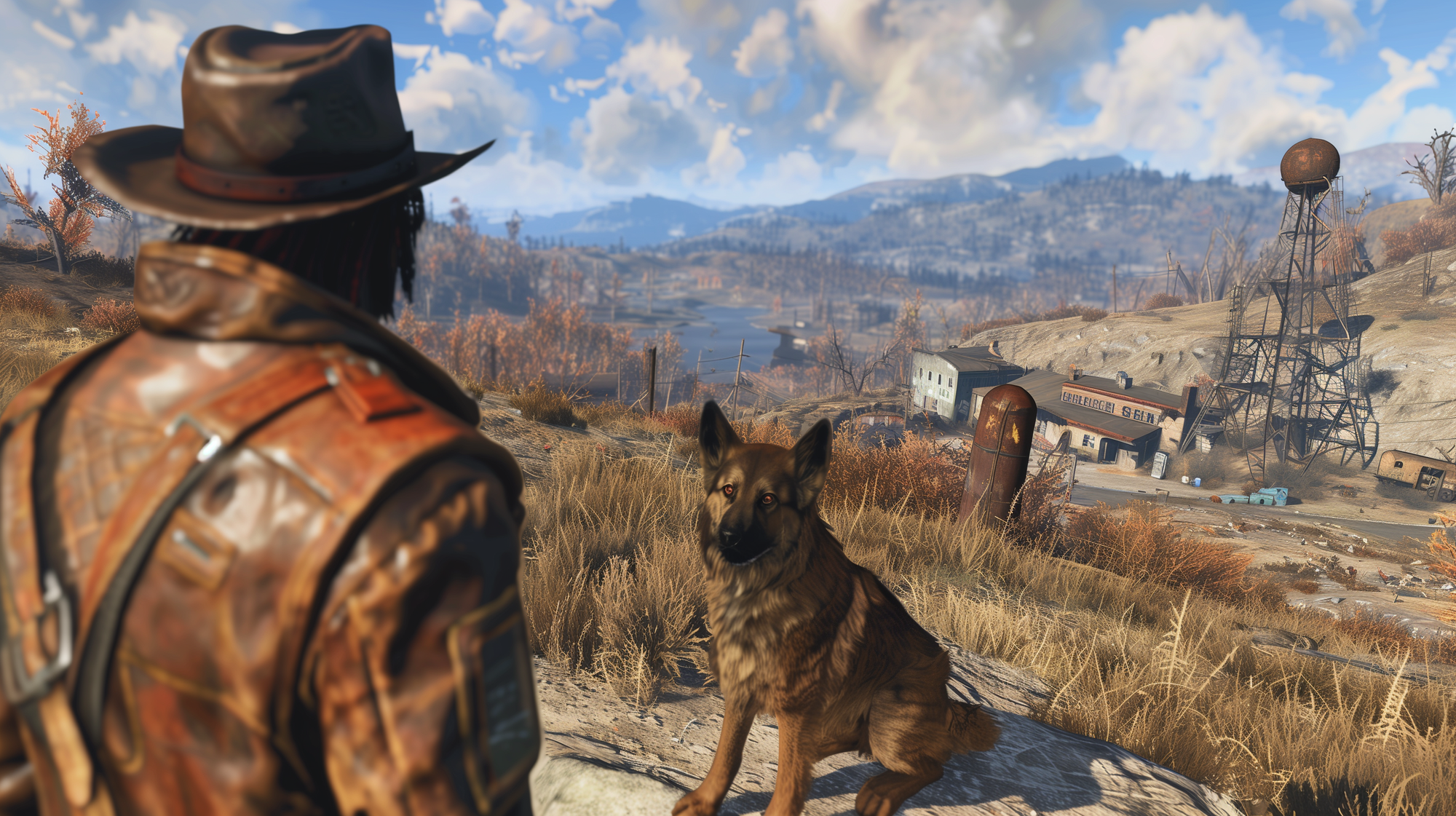
12. The Shi (San Francisco)
- Descendents of Chinese spies; known for their scientific advancements and secrecy.
13. The Khans
- Raider tribe with a fierce warrior culture; located in the Southwest.
14. The Boomers (Mojave Wasteland)
- Isolationist tribe that specializes in explosives and artillery.

15. The Tunnel Snakes (Capital Wasteland)
- Small gang that originated in Vault 101; known for their greaser aesthetic.
16. The Atom Cats (Commonwealth)
- Gang that idolizes the "greaser" culture and maintains Power Armor.
17. The Kings (New Vegas)
- Gang that emulates Elvis Presley and maintains order in Freeside.
18. The Triggermen (Commonwealth)
- Pre-War crime syndicate that operates in and around Goodneighbor.
Post-War Corporations:
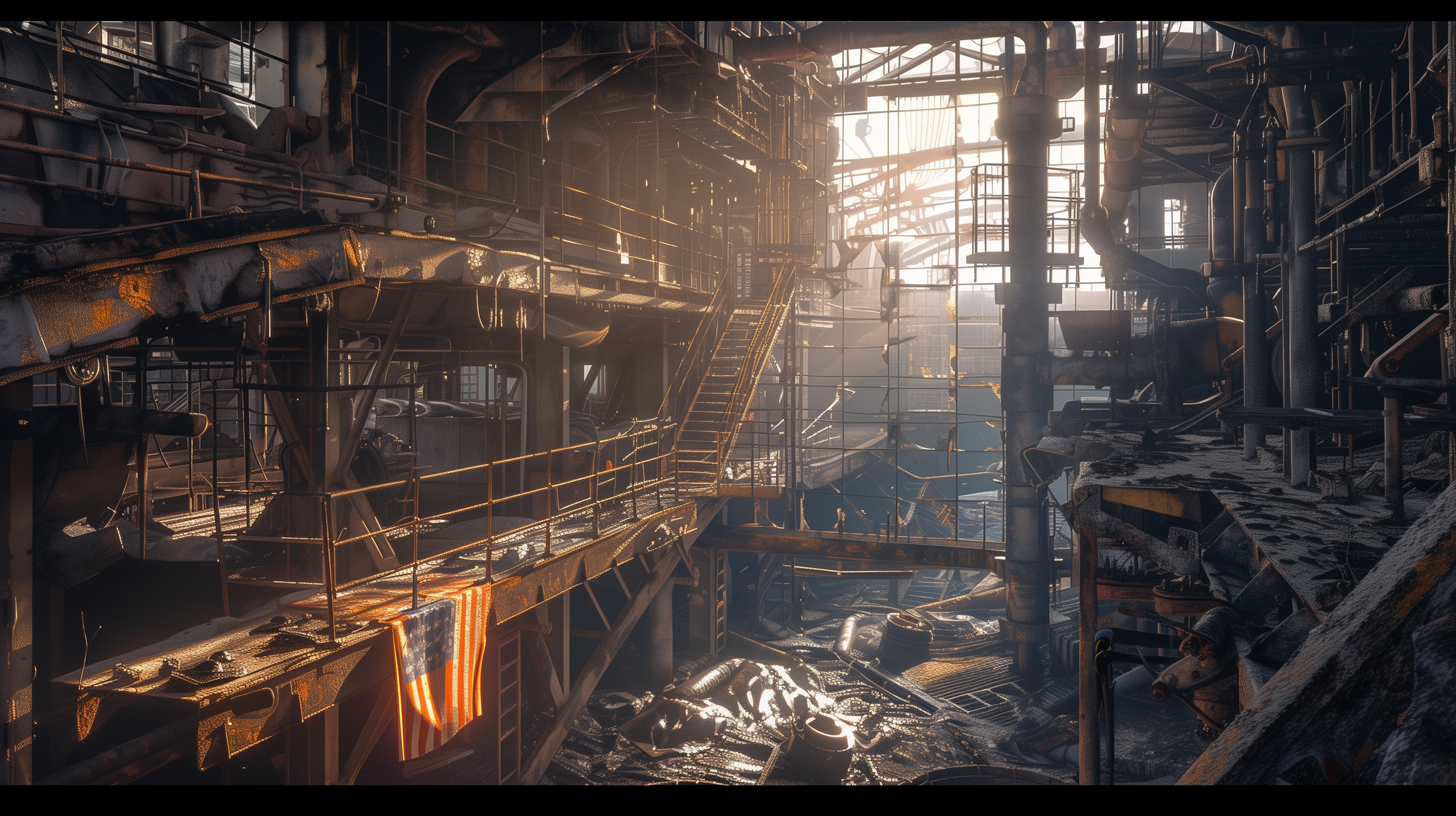
19. Crimson Caravan
- Merchant company that operates across the western wasteland.
20. Gun Runners
- High-end weapons manufacturer and distributor.
21. Van Graffs
- Energy weapons merchant family with a ruthless reputation.
These factions, governments, and corporations represent a diverse array of interests and ideologies in the post-apocalyptic world of Fallout. Their interactions, conflicts, and alliances shape the wasteland's political and social landscape.
Vault-Tec Corporation is one of the most iconic and sinister entities in the Fallout universe. While the company presents itself as a benevolent savior of humanity, offering refuge from nuclear annihilation in its state-of-the-art underground Vaults, the reality is far more complex and disturbing.
The origins of Vault-Tec can be traced back to the early 2050s, when the U.S. government, faced with the looming threat of nuclear war, initiated "Project Safehouse." This project aimed to create a network of underground shelters that could protect the American population in the event of a nuclear attack.
Vault-Tec, then a relatively small defense contractor, was awarded the contract to design and construct these shelters. However, as the company began its work, it became clear that the government had other, more sinister plans in mind.
Under the direction of the shadowy "Enclave" (a group of powerful politicians, corporate leaders, and military officials), Vault-Tec began to incorporate a series of secret experiments into the design of the Vaults. These experiments, collectively known as the "Societal Preservation Program," were intended to test the limits of human physiology, psychology, and social dynamics in extreme conditions.
Each Vault was designed to have a unique "experiment" built into its structure and operations. Some were relatively benign, such as Vault 8, which was intended to open after only 10 years to help rebuild society. Others, like Vault 12 (which had a faulty door that allowed dangerous levels of radiation to leak in), Vault 68 (which housed 999 men and only one woman), and Vault 106 (which pumped psychoactive drugs into the air supply), were far more twisted and cruel.
As Vault-Tec grew in size and influence, it used its close ties to the government and other corporations to expand its reach and power. The company became a major player in the fields of robotics, artificial intelligence, and advanced weapons technology, often working on secret projects for the military and other shadowy organizations.
One of the most disturbing aspects of Vault-Tec's history is the extent to which it was willing to deceive and manipulate the public in order to further its own agenda. The company's marketing campaigns presented the Vaults as luxurious, state-of-the-art facilities that would provide a comfortable and safe environment for their inhabitants. In reality, many of the Vaults were poorly constructed and under-supplied, with some lacking even the most basic necessities like food, water, and medical supplies.
Vault-Tec's darkest secrets, however, lie in the true purpose of the Vaults themselves. While the company claimed that the Vaults were intended to preserve human life and rebuild society after a nuclear war, the reality was that they were never meant to save anyone. The Societal Preservation Program was, in fact, a cover for a much larger and more sinister project known as the "Forced Evolutionary Virus" (FEV) program.
The FEV program, which was run in conjunction with the U.S. military and other secret organizations, aimed to create a new breed of "super soldier" by exposing human subjects to a mutagenic virus. The Vaults were designed to provide a steady supply of test subjects for these experiments, with many inhabitants being unknowingly exposed to the virus or subjected to other horrific experiments.
In the end, Vault-Tec's true legacy is one of unethical experimentation, corporate greed, and a callous disregard for human life. While the company may have presented itself as a savior of humanity, its actions reveal a much darker and more sinister agenda, one that ultimately contributed to the downfall of pre-war society and the creation of the brutal, post-apocalyptic world of Fallout.
Here is a list of some of the most notable Vault experiments in the Fallout universe, along with their respective Vault numbers and a brief description of their unique histories or experiments:
1. Vault 12 (Necropolis)
- Intended to study the effects of radiation on the selected population.
- The Vault door was designed to not close properly, exposing the inhabitants to high levels of radiation.
2. Vault 13
- Meant to stay closed for 200 years as a study of prolonged isolation.
- The Water Chip was programmed to fail after 150 days, forcing the Vault Dweller to leave and find a replacement.
3. Vault 22
- Designed to study the effects of an experimental, genetically engineered fungus on the inhabitants.
- The fungus mutated, causing the Vault dwellers to become spore carriers and spread the infection.
4. Vault 34
- Equipped with a vast armory and the intended dwellers were of a violent nature.
- A virus infected the Vault's computer system, causing the weapons to be released and used by the dwellers.
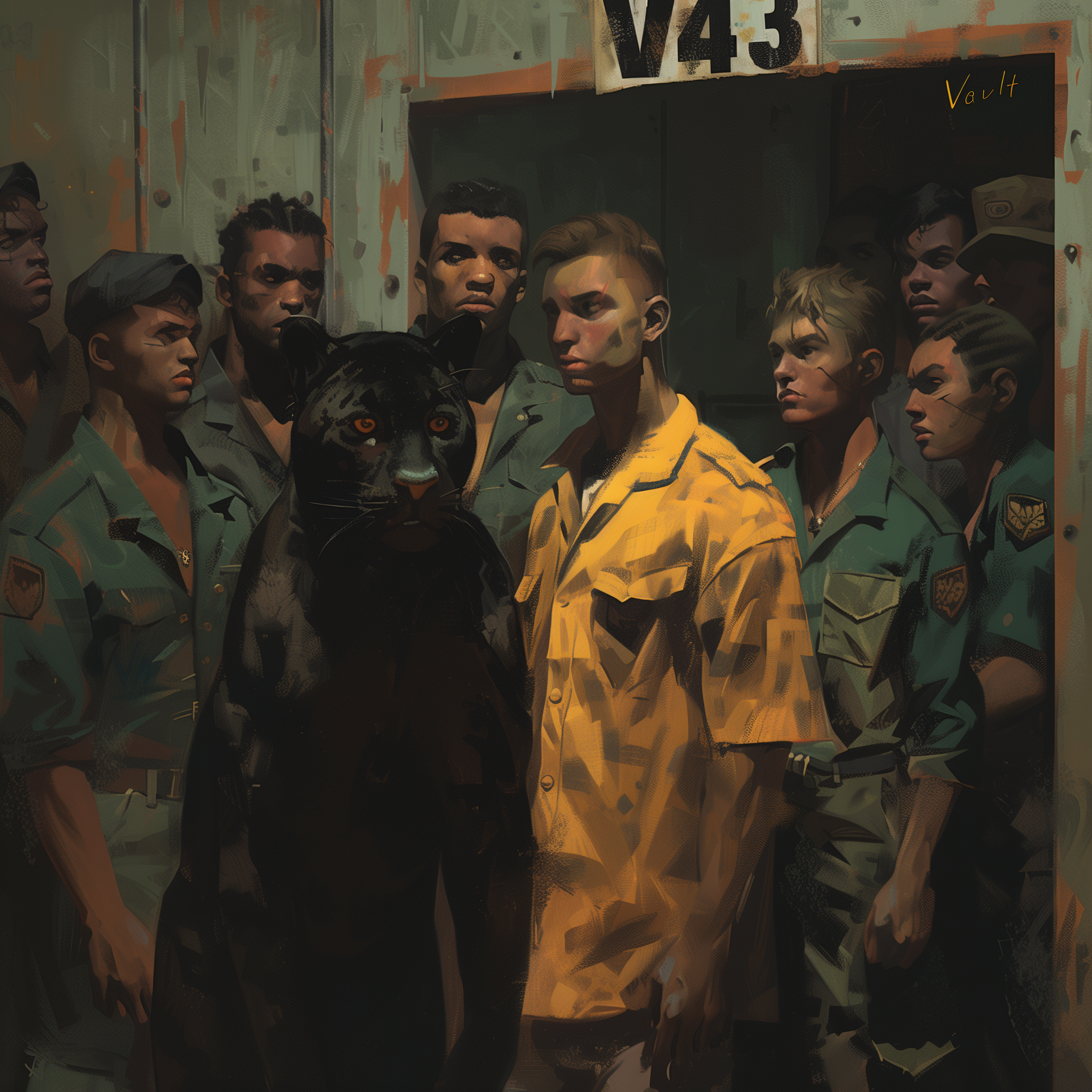
5. Vault 43
- Populated with 20 men, 10 women, and one panther.
- Experiment details are unknown, but the inclusion of a dangerous predator likely caused chaos.
6. Vault 68
- Populated with 999 men and only one woman.
- Designed to study the effects of severe gender imbalance on a population.
7. Vault 69
- Populated with 999 women and only one man.
- The counterpart to Vault 68, studying the same gender imbalance scenario.
8. Vault 81
- Equipped with a hidden section housing Curie, a Miss Nanny robot conducting research on Mole Rats.
- The Vault was used to study the effects of a unique strain of Mole Rat disease on the population.
9. Vault 87
- The inhabitants were exposed to the Forced Evolutionary Virus (FEV).
- The Vault was a testing site for the FEV, creating Super Mutants.
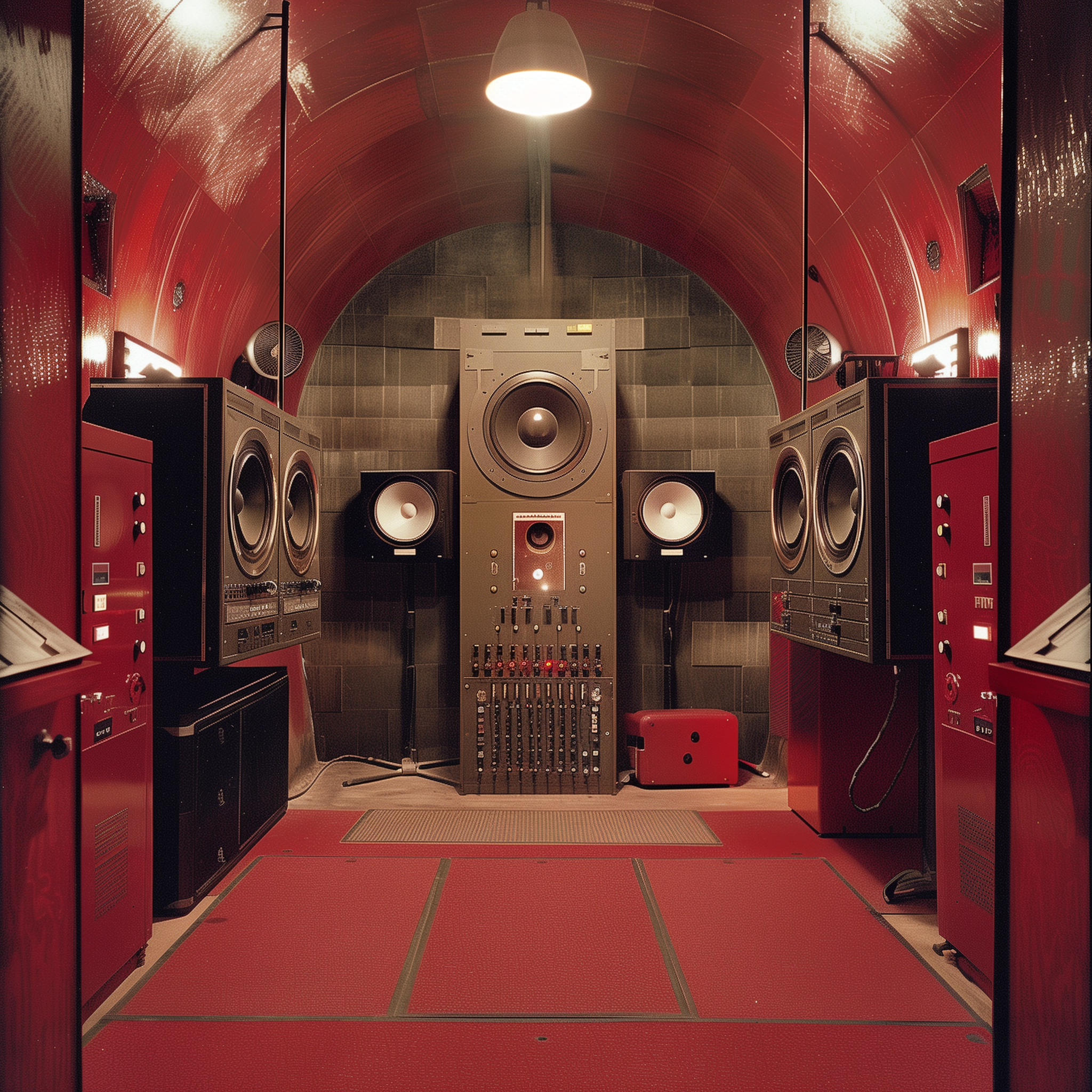
10. Vault 92
- Populated with a group of renowned musicians and fitted with state-of-the-art recording equipment.
- White noise generators were used to implant subliminal messages into the music recorded within the Vault.
11. Vault 95
- Intended to house drug addicts and rehabilitate them using experimental methods.
- The Vault's true purpose was to study the effects of long-term drug use and develop new, highly addictive pharmaceuticals.
12. Vault 108
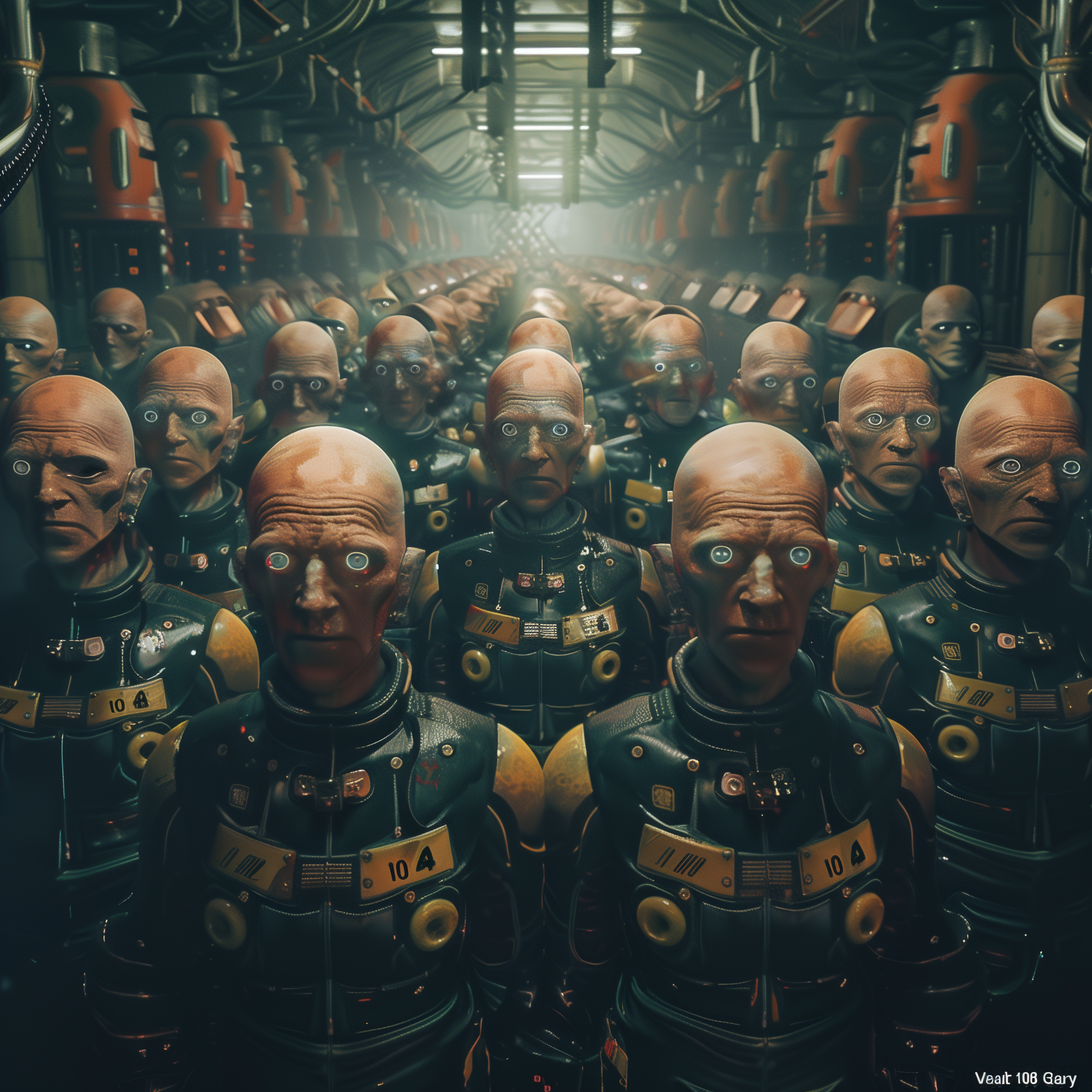
- Populated by a large number of individuals named "Gary" and their clones.
- The purpose of the cloning experiment remains unclear, but the Vault descended into chaos due to the clones' aggression.
13. Vault 111
- Cryogenic facility where inhabitants were frozen in suspended animation.
- The true purpose was to study the effects of long-term cryogenic suspension on unsuspecting test subjects.
These are just a few examples of the many Vault experiments conducted by Vault-Tec. Each Vault has its own unique history and purpose, showcasing the dark and unethical nature of the corporation's scientific pursuits.
Here are some more examples of Vault experiments in the Fallout universe:
14. Vault 3
- Populated by a diverse group of people, but equipped with only a single water chip.
- Designed to study the effects of resource scarcity on the inhabitants.
15. Vault 8
- Intended to open and re-colonize the surface after just 10 years.
- Part of a study to observe how quickly society could recover and rebuild.
16. Vault 11
- The inhabitants were told they must sacrifice one of their own each year or else everyone would die.
- Actually a study of the effects of paranoia and the inhabitants' willingness to sacrifice others for their own survival.
17. Vault 29
- All inhabitants were under the age of 15, with no adults present.
- Designed to study how children would develop and organize themselves without adult guidance.
18. Vault 55
- No entertainment tapes were provided to the inhabitants.
- Studied the effects of severe boredom and monotony on the human psyche.
19. Vault 56
- All entertainment tapes were removed except those of a particular comedian.
- Studied the effects of repetitive entertainment on the inhabitants' mental health.
20. Vault 75
- Equipped with advanced educational facilities to raise a generation of highly intelligent individuals.
- In reality, the Vault was designed to train and develop super-soldiers through rigorous physical and mental conditioning.
21. Vault 77
- Populated by only one man and a crate of puppets.
- Studied the effects of extreme isolation and psychological stress on the individual.
22. Vault 106
- Psychoactive drugs were released into the air filtration system.
- Designed to study the effects of prolonged exposure to mind-altering substances on the inhabitants.
23. Vault 112
- Inhabitants were placed in virtual reality pods, living out their lives in a simulated world.
- Secretly designed by Stanislaus Braun as a means to satisfy his sadistic desires and thirst for power.
24. Vault 114
- Populated entirely by people suffering from social anxiety and agoraphobia.
- Designed to study how these individuals would interact and cope in a confined space.
25. Vault 118
- The wealthy inhabitants had their brains removed and placed into robotic bodies.
- Studied the effects of transferring human consciousness into machines and the societal implications of immortality.
These additional examples further showcase the wide range of unethical and bizarre experiments conducted by Vault-Tec in the name of science. Each Vault tells a unique story of human resilience, adaptability, and the consequences of unchecked scientific ambition.
One of the craziest and most extreme character backstories in the Fallout universe belongs to the Vault 11 Overseer from Fallout: New Vegas. The story of Vault 11 itself is quite disturbing, as it was one of Vault-Tec's most unethical social experiments.
The inhabitants of Vault 11 were told that each year, they must sacrifice one of their own to the Vault's computer system, or else all residents would be killed. This was intended to study the effects of paranoia and the lengths people would go to ensure their own survival.
The Overseer's role in this experiment was particularly twisted. The Overseer was aware of the true nature of the experiment and was instructed to keep the population in line, ensuring that the sacrifices would continue. However, the Overseer soon discovered that if the residents refused to select a sacrifice, the Vault's computer would simply choose the Overseer as the default sacrifice.
Driven mad by this revelation and the weight of his responsibilities, the final Overseer of Vault 11 became increasingly paranoid and unstable. He began to see conspiracies everywhere and became convinced that the residents were plotting against him.
In a final act of desperation and insanity, the Overseer secretly rigged the Vault's election process, ensuring that he would be elected as the next sacrifice. However, he had also programmed the computer to reveal the truth about the experiment upon his death.
When the residents discovered the truth, they refused to continue the sacrifices, expecting to be killed by the computer. To their surprise, a message from Vault-Tec congratulated them on their "commitment to human life" and revealed that they were free to leave the Vault. The residents turned on each other in anger, resulting in a bloody massacre.
The Overseer's story showcases the depths of Vault-Tec's cruelty and the psychological toll their experiments could take on individuals. The fact that the Overseer was driven to such extreme measures, ultimately sacrificing himself in a twisted attempt to expose the truth, highlights the sheer insanity and desperation that the Vault 11 experiment fostered.
Another particularly crazy character backstory in the Fallout universe is that of Pickman, a serial killer encountered in Fallout 4. Pickman's story is a disturbing tale of violence, art, and madness in the post-apocalyptic world.
Pickman, whose first name is never revealed, was a resident of Pickman Gallery in Boston's North End. He was a painter with a very dark and twisted vision. Pickman believed that the essence of human suffering and death was the purest form of art, and he sought to capture this in his work.
To create his "masterpieces," Pickman would kidnap raiders and subject them to unspeakable torture, eventually killing them. He would then use their blood and body parts to create grotesque paintings and sculptures. His "art" was a reflection of the brutal, post-apocalyptic world he lived in, and he believed that he was capturing the true nature of humanity in his work.
When the Sole Survivor encounters Pickman, he is under attack by a group of raiders seeking revenge for their kidnapped and murdered comrades. If the player chooses to help Pickman, they will discover the extent of his madness and the horrors he has committed in the name of his art.
Pickman's story is a chilling example of how the post-apocalyptic world of Fallout can twist and corrupt the human psyche. His belief that violence and suffering are the highest forms of art is a testament to the brutal nature of life in the wasteland and the depths of insanity that some individuals can sink to.
What makes Pickman's story even more unsettling is that, despite his heinous acts, he maintains a calm, almost charming demeanor when interacting with the player. This juxtaposition of civility and savagery showcases the complexity and moral ambiguity that often characterizes the best Fallout stories.
One of the most bizarre and esoteric characters in the Fallout universe is the Puppet Man from Fallout 3's Point Lookout DLC. The Puppet Man's story is a strange and unsettling tale that delves into the realm of psychological horror.

The Puppet Man, whose real name is unknown, is a resident of the swamps of Point Lookout. He is a deeply disturbed individual who has developed a strange obsession with puppets. The origins of his madness are unclear, but it is suggested that he may have been a victim of the brain-altering experiments conducted by the pre-war government in the area.
The Puppet Man lives in a secluded cabin deep in the swamps, surrounded by his "friends" - a collection of grotesque, handmade puppets. He believes that these puppets are alive and that they speak to him, guiding his actions. The Puppet Man's primary goal is to "liberate" the other residents of Point Lookout by turning them into puppets, thus "freeing" them from the burdens of life.
When the Lone Wanderer encounters the Puppet Man, they find themselves in a surreal and terrifying situation. The Puppet Man speaks to his puppets as if they were real, and he becomes increasingly aggressive if the player attempts to intervene or disrupt his "work."
The Puppet Man's cabin is a nightmarish scene, filled with dismembered body parts, half-finished puppets, and eerie, childlike drawings. The atmosphere is one of pure madness, and the player is left to question whether the Puppet Man's insanity is the result of the experiments he endured or if it is a manifestation of the darker aspects of the human psyche.
What makes the Puppet Man's story so compelling is its ambiguity and the way it taps into deep-seated fears about loss of control and the nature of reality. The idea that a person could become so disconnected from reality that they would find solace in inanimate objects is both tragic and terrifying, and it speaks to the power of the human mind to create its own nightmares.
The Puppet Man's story is a testament to the storytelling depth and complexity that can be found in the Fallout universe, even in the most unexpected and esoteric places.
In the Fallout universe, the exploration and commercialization of outer space is a theme that has been touched upon in various games and lore entries, although the information is somewhat limited and often presented as pre-war propaganda or corporate marketing.
According to the Fallout timeline, the United States made significant advancements in space travel and technology in the years leading up to the Great War. The U.S. had established a permanent lunar colony, as well as a series of space stations and satellites in Earth's orbit. These achievements were largely driven by the fierce competition between the U.S. and other superpowers, as well as the influence of corporations like Nuka-Cola and Vault-Tec.
The Nuka-Cola Corporation, in particular, played a significant role in the commercialization of space travel. The company sponsored a series of space missions and used its marketing prowess to promote the idea of civilian space exploration. The iconic image of a Nuka-Girl riding a rocket ship became a symbol of the company's ambitious plans for space tourism and colonization.
However, the extent to which these plans were actually realized is unclear. While there are references to functioning space stations and lunar colonies in the Fallout lore, there is little concrete information about their status or the people who lived and worked in them.
One of the most prominent examples of space exploration in the Fallout universe is the Enclave, a secretive organization that claimed to be the continuation of the pre-war U.S. government. The Enclave was known to have a significant presence in space, with a network of orbital platforms and satellites that allowed them to monitor and control events on Earth.
In Fallout 3, the player encounters a group of Enclave soldiers who have returned from a space station known as "Raven Rock." This suggests that the Enclave had a well-established space program and may have used it to escape the devastation of the Great War.
Another example of space travel in the Fallout universe is the Mothership Zeta DLC for Fallout 3. In this add-on, the player is abducted by aliens and taken to a massive spaceship in Earth's orbit. The spaceship is home to a diverse collection of beings from different time periods and planets, all of whom have been captured and experimented on by the aliens.
While the Mothership Zeta DLC is not considered canon by some fans, it does offer an interesting glimpse into the possibilities of extraterrestrial life and space travel in the Fallout universe. It suggests that the universe is vast and complex, with many mysteries yet to be uncovered.
Overall, the role of outer space in the Fallout universe is one of intrigue and speculation. While there are hints and references to space travel and colonization scattered throughout the games and lore, much of it is presented as pre-war propaganda or corporate marketing, making it difficult to separate fact from fiction. However, the idea of humanity reaching for the stars, even in the face of nuclear annihilation, adds an additional layer of depth and complexity to the already rich and fascinating world of Fallout.
In the Fallout universe, the concept of super soldiers and post-apocalyptic government plans for world domination is closely tied to the Forced Evolutionary Virus (FEV) program and the activities of the Enclave.
The FEV was originally developed by the U.S. military and the shadowy West Tek corporation as part of a secret program to create the ultimate soldier. The virus was designed to enhance human physiology, increasing strength, resilience, and intelligence. However, the early experiments with the FEV were plagued with problems, often resulting in horrific mutations and mental instability in test subjects.
Despite these setbacks, the government continued to fund and support the FEV program, seeing it as a potential game-changer in the global struggle for power. As tensions between the U.S. and China escalated in the late 21st century, the race to perfect the FEV became increasingly desperate.
One of the key figures in the FEV program was Dr. Richard Grey, a brilliant scientist who was exposed to the virus during an experiment gone wrong. Rather than killing him, the FEV transformed Grey into a powerful mutant entity known as "The Master." The Master became obsessed with the idea of using the FEV to create a new race of super mutants that would inherit the earth after the war.
Under The Master's leadership, a group of super mutants known as the "Unity" began to spread across the wasteland, forcibly "recruiting" humans to join their ranks by exposing them to the FEV. The Unity's ultimate goal was to create a world where all humans had been transformed into super mutants, eliminating the divisions and conflicts that had led to the Great War.
However, The Master's plans were ultimately foiled by the Vault Dweller, the protagonist of the original Fallout game. In a climactic battle, the Vault Dweller destroyed the Master's base of operations and put an end to the Unity's reign of terror.
But while The Master may have been defeated, the legacy of the FEV program lived on. In the years following the Great War, the Enclave, a secretive organization made up of the remnants of the U.S. government and military, continued to experiment with the virus in the hopes of creating a new breed of super soldier.
In Fallout 2, the Enclave's plans for the FEV are revealed in more detail. Under the leadership of President Dick Richardson, the Enclave sought to use the virus to wipe out all "mutant" life on earth, including humans who had been exposed to radiation or other toxins. The Enclave believed that by cleansing the world of these "impurities," they could create a new, genetically pure human race that would be immune to the effects of radiation and disease.
To achieve this goal, the Enclave developed a modified strain of the FEV known as the "Curling Virus-13," or "FEV Curling-13." This new virus was designed to be even more potent than the original, with the ability to target specific genetic markers and wipe out entire populations with brutal efficiency.
The Enclave's plans were ultimately foiled by the Chosen One, the protagonist of Fallout 2, who infiltrated the Enclave's oil rig headquarters and destroyed their research facilities. However, the specter of the FEV and the Enclave's twisted vision for the future continues to haunt the Fallout universe, serving as a reminder of the depths to which humanity can sink in the pursuit of power and control.
The Fallout series has featured a diverse cast of protagonists, each with their own unique backstories, motivations, and character development options. Let's take a closer look at the main protagonist of each main game in the series.
Fallout (1997) - Vault Dweller
The Vault Dweller is the protagonist of the original Fallout game. Born in Vault 13, they are sent out into the wasteland to find a replacement water chip for the Vault. Along the way, they become embroiled in a conflict with the super mutant army led by The Master. The Vault Dweller's background is largely undefined, allowing players to shape their character through choices made during gameplay.
Fallout 2 (1998) - Chosen One
The Chosen One is the grandchild of the Vault Dweller from Fallout 1. Born in the primitive tribe of Arroyo, they are sent on a quest to retrieve the Garden of Eden Creation Kit (GECK) to save their village from famine. The Chosen One's journey leads them to discover the Enclave's plans for domination using the FEV virus. Like the Vault Dweller, the Chosen One's background is flexible, allowing for player-driven character development.
Fallout 3 (2008) - Lone Wanderer
The Lone Wanderer is born and raised in Vault 101. When their father mysteriously leaves the Vault, the Lone Wanderer sets out to find him and becomes entangled in the conflict over the control of Project Purity, a water purification system. Players can shape the Lone Wanderer's personality and skills through in-game choices and interactions.
Fallout: New Vegas (2010) - Courier
The Courier is a messenger who is shot and left for dead while delivering a mysterious package to New Vegas. After being rescued and recovering, the Courier sets out to find their would-be killer and becomes involved in the power struggle between the New California Republic, Caesar's Legion, and other factions vying for control of the Mojave Wasteland. The Courier's background is the most open-ended of all Fallout protagonists, with players having the freedom to define their character's past and motivations through dialogue options and choices.
Fallout 4 (2015) - Sole Survivor
The Sole Survivor is a pre-war character who enters Vault 111 with their family just before the bombs fall. After being cryogenically frozen for 210 years, they awaken to find their spouse murdered and their child, Shaun, kidnapped. The Sole Survivor's quest to find Shaun leads them to discover the secretive Institute and become entangled in the conflicts between various factions in the Commonwealth. Unlike previous protagonists, the Sole Survivor has a predefined backstory, but players can still shape their personality and skills through in-game choices.
Fallout 76 (2018) - Resident of Vault 76
In Fallout 76, players create their own character who is a resident of Vault 76, one of the first Vaults to open following the Great War. As one of the "Responders," the player character is tasked with rebuilding society and exploring the newly-opened wasteland. Due to the game's multiplayer nature, the protagonist's story is less defined than in other Fallout titles, with players having the freedom to create their own narratives through interactions with other players and the game world.
Similarities and Differences:
The protagonists of the Fallout series share some common traits. They are all survivors in a post-apocalyptic world, forced to navigate the dangers of the wasteland while pursuing their own goals and agendas. Each protagonist becomes involved in the power struggles between various factions and must make difficult choices that shape the future of their respective game worlds.
However, there are also notable differences between the protagonists. The Vault Dweller, Chosen One, and Lone Wanderer all have ties to Vaults, while the Courier and Sole Survivor have more diverse backgrounds. The Sole Survivor is the only protagonist with a predefined backstory, while the others allow for more player-driven character development.
In terms of character pedigree, the original Fallout and Fallout 2 used the S.P.E.C.I.A.L. system, which allowed players to distribute points among seven attributes: Strength, Perception, Endurance, Charisma, Intelligence, Agility, and Luck. These attributes, along with chosen skills and traits, defined the character's abilities and playstyle.
Fallout 3 and New Vegas expanded on this system by adding perks, which are special abilities or bonuses that characters can acquire as they level up. Fallout 4 streamlined the character creation process, focusing more on perks and allowing players to allocate points to S.P.E.C.I.A.L. attributes as they level up.
Fallout 76, being a multiplayer game, introduced a more flexible character progression system, allowing players to reallocate their S.P.E.C.I.A.L. points and perks to adapt to different situations and playstyles.
In conclusion, while each Fallout protagonist has their own unique story and characteristics, they all share the common theme of survival and the power to shape the wasteland through their actions. The character pedigree options have evolved throughout the series, providing players with varying degrees of freedom to create and develop their characters according to their preferences.
The Brotherhood of Steel is one of the most prominent and iconic factions in the Fallout universe. With a complex history spanning several games, the Brotherhood has faced numerous challenges, triumphs, and internal conflicts. Let's delve into the secrets, might, origins, and downfalls of this powerful organization.
Origins:
The Brotherhood of Steel was founded by Captain Roger Maxson, a former U.S. Army officer, in the aftermath of the Great War. Maxson was stationed at the Mariposa Military Base in California, where the U.S. government was conducting experiments with the Forced Evolutionary Virus (FEV). When the base's scientists began testing the FEV on human subjects, Maxson and his soldiers rebelled, executing the scientists and sealing off the base.
Following the rebellion, Maxson and his followers left the base and eventually settled in the Lost Hills bunker in California. There, they formed the Brotherhood of Steel, dedicating themselves to the preservation and study of pre-war technology and knowledge.
Might and Secrets:
The Brotherhood of Steel's power lies in their advanced technology, strict military hierarchy, and extensive knowledge of pre-war science and engineering. They have access to high-tech weapons, power armor, and other advanced equipment that gives them a significant advantage over other wasteland factions.
One of the Brotherhood's most closely guarded secrets is the location of their main base, the Lost Hills bunker. This secrecy has allowed them to maintain their technological edge and protect their resources from rivals.
Another secret the Brotherhood has kept is the existence of the FEV and the experiments conducted at Mariposa. The Brotherhood's founders swore an oath to never reveal the truth about the FEV to outsiders, fearing that the knowledge could be misused and lead to another catastrophe.
Throughout the series, the Brotherhood has also been involved in various other secretive operations, such as the recovery of advanced weapons and technology from pre-war ruins and the monitoring of rival factions' activities.
Downfalls and Challenges:
Despite their power and influence, the Brotherhood of Steel has faced numerous challenges and internal conflicts throughout the series.
One of the most significant challenges has been the Brotherhood's strict adherence to their code and traditions, which has sometimes put them at odds with the needs and values of the broader wasteland community. This has led to conflicts with other factions and has sometimes limited the Brotherhood's ability to adapt to changing circumstances.
Another major challenge has been the Brotherhood's internal divisions and power struggles. In Fallout 4, for example, the East Coast chapter of the Brotherhood, led by Elder Arthur Maxson, becomes increasingly authoritarian and hostile towards non-human entities, leading to conflicts with other factions and even other Brotherhood chapters.
The Brotherhood has also suffered significant losses throughout the series, such as the destruction of their main base in Fallout: New Vegas and the loss of several key leaders and members in various conflicts.
Furthermore, the Brotherhood's reliance on advanced technology has sometimes been a double-edged sword, as they have struggled to maintain and repair their equipment in the harsh conditions of the wasteland. This has led to a decline in their power and influence in some regions.
In conclusion, the Brotherhood of Steel is a complex and multifaceted faction with a rich history and a powerful presence in the Fallout universe. While their advanced technology and strict military structure have made them a formidable force, their rigid adherence to tradition, internal conflicts, and reliance on scarce resources have also been the source of many challenges and downfalls. As the series continues to evolve, it remains to be seen how the Brotherhood will adapt and survive in the ever-changing landscape of the post-apocalyptic wasteland.
The most overpowered item in the Fallout series is often considered to be the "Mysterious Stranger's Magnum" or "Mysterious Magnum" from Fallout 3 and Fallout: New Vegas. This unique weapon is associated with the Mysterious Stranger, a random encounter in the game where a trench coat-clad figure appears and assists the player in combat.
The Mysterious Magnum is a .44 caliber revolver with a very high base damage, a low Action Point cost, and a 100% critical hit chance. In Fallout 3, it can be obtained through a random encounter with the Mysterious Stranger, while in Fallout: New Vegas, it can be acquired by completing the "Talent Pool" quest in a specific way.
Reasons why people consider the Mysterious Magnum overpowered:
1. Extremely high damage output: The weapon's base damage is significantly higher than most other firearms in the game, allowing players to eliminate enemies quickly.
2. 100% critical hit chance: Every shot fired from the Mysterious Magnum is a guaranteed critical hit, further increasing its already considerable damage output.
3. Low Action Point cost: The low AP cost allows players to fire multiple shots in a single turn using the Vault-Tec Assisted Targeting System (V.A.T.S.), making it incredibly efficient in combat.
4. Ignores Damage Threshold: In Fallout: New Vegas, the Mysterious Magnum ignores the Damage Threshold of enemies, meaning it remains effective against heavily armored targets.
How it is used/abused:
Players who acquire the Mysterious Magnum often use it as their primary weapon, relying on its high damage and critical hit chance to quickly dispatch enemies. The weapon's low AP cost allows players to use V.A.T.S. to target multiple enemies in a single turn, making it especially effective against groups of foes.
Some players may deliberately seek out the Mysterious Magnum early in the game, using it to easily overcome challenges that would normally require more time and effort to complete. This can make the game feel unbalanced, as the weapon's power can trivialize many encounters.
In some cases, players may also exploit glitches or bugs to obtain multiple copies of the Mysterious Magnum, further exacerbating its overpowered nature.
It's worth noting that the perception of the Mysterious Magnum as overpowered is somewhat subjective and depends on individual playstyles and preferences. Some players may enjoy the power fantasy it provides, while others might find that it detracts from the game's overall balance and challenge. Additionally, later Fallout games have introduced other powerful weapons and items that may compete with the Mysterious Magnum for the title of "most overpowered."

Fallout 76 introduces a unique game mechanic involving nuclear weapons, which is a departure from the single-player Fallout games. In Fallout 76, players can launch nuclear missiles at various locations on the map, causing massive destruction and irradiating the targeted area. This mechanic is tied to the game's main storyline and endgame content.
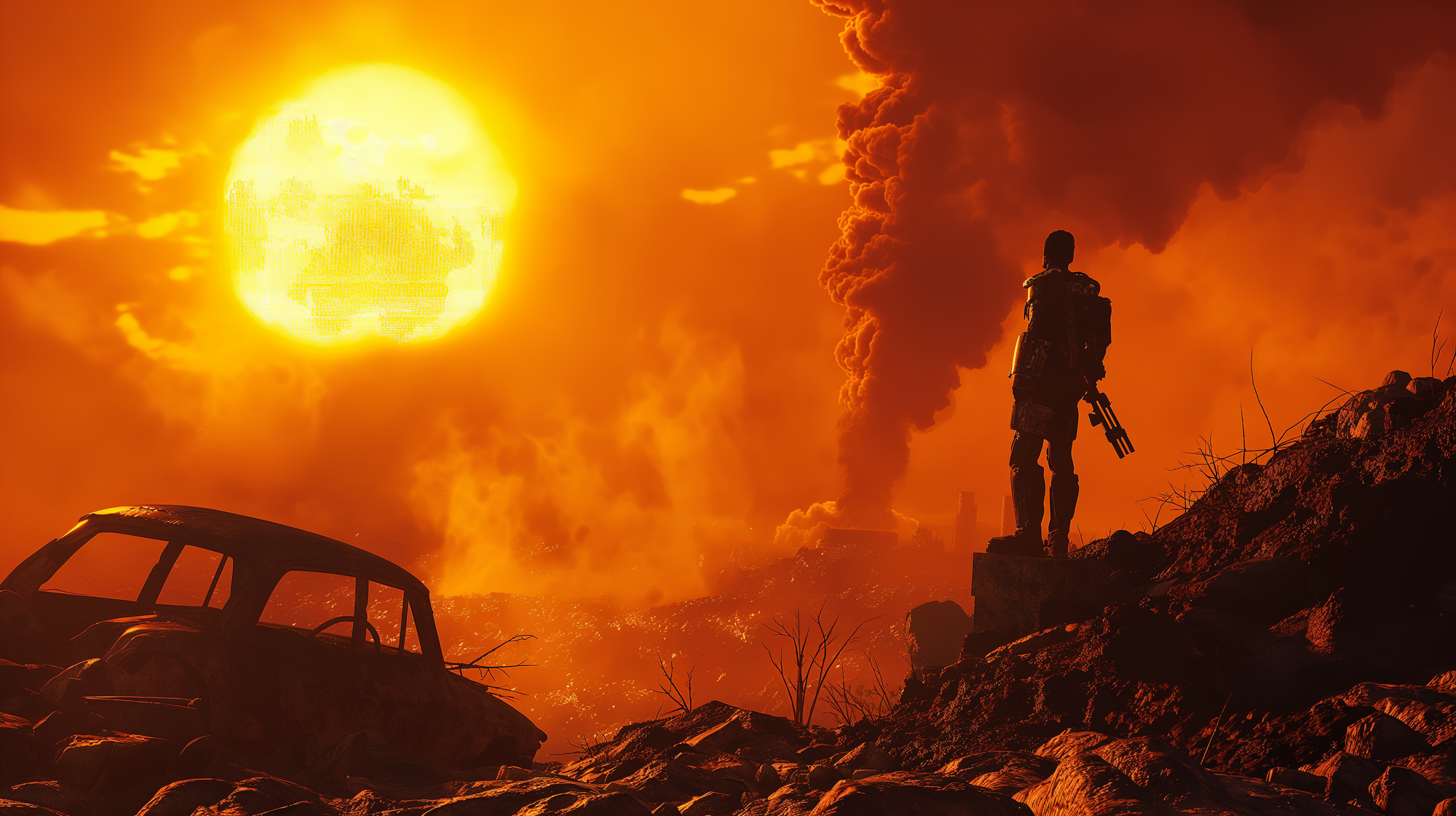
Reasons for the inclusion of nukes in Fallout 76:
1. Lore and setting: The presence of nuclear weapons is consistent with the Fallout universe's lore, which is set in a post-apocalyptic world following a global nuclear war. The ability for players to use nukes reinforces the game's theme of the devastating consequences of nuclear warfare.
2. Endgame content: Launching a nuke is a significant part of Fallout 76's endgame content. Players must complete a series of quests and gather launch codes to gain access to nuclear silos. Launching a nuke is considered a high-level, group-oriented activity that provides players with a sense of progression and accomplishment.
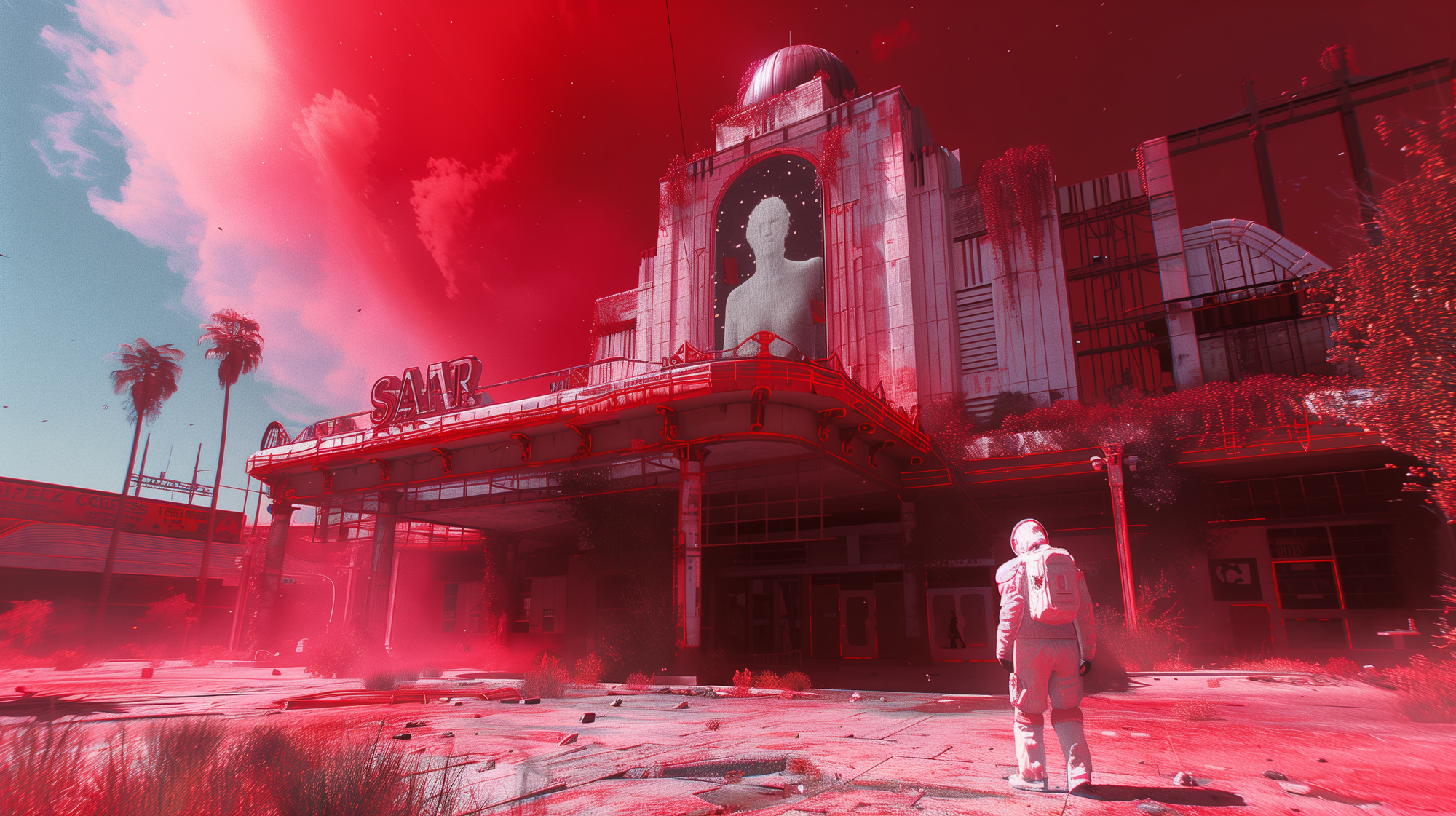
3. Creating high-level zones: When a nuke is launched, the targeted area becomes a high-level zone filled with tough enemies, rare resources, and valuable loot. This creates new challenges and opportunities for players, encouraging them to explore and engage with the irradiated areas.
4. Player interaction and conflict: The ability to launch nukes can create dynamic interactions between players. Players may collaborate to launch nukes or compete to secure launch codes. The threat of a nuke being launched by rival players adds an element of tension and unpredictability to the game.
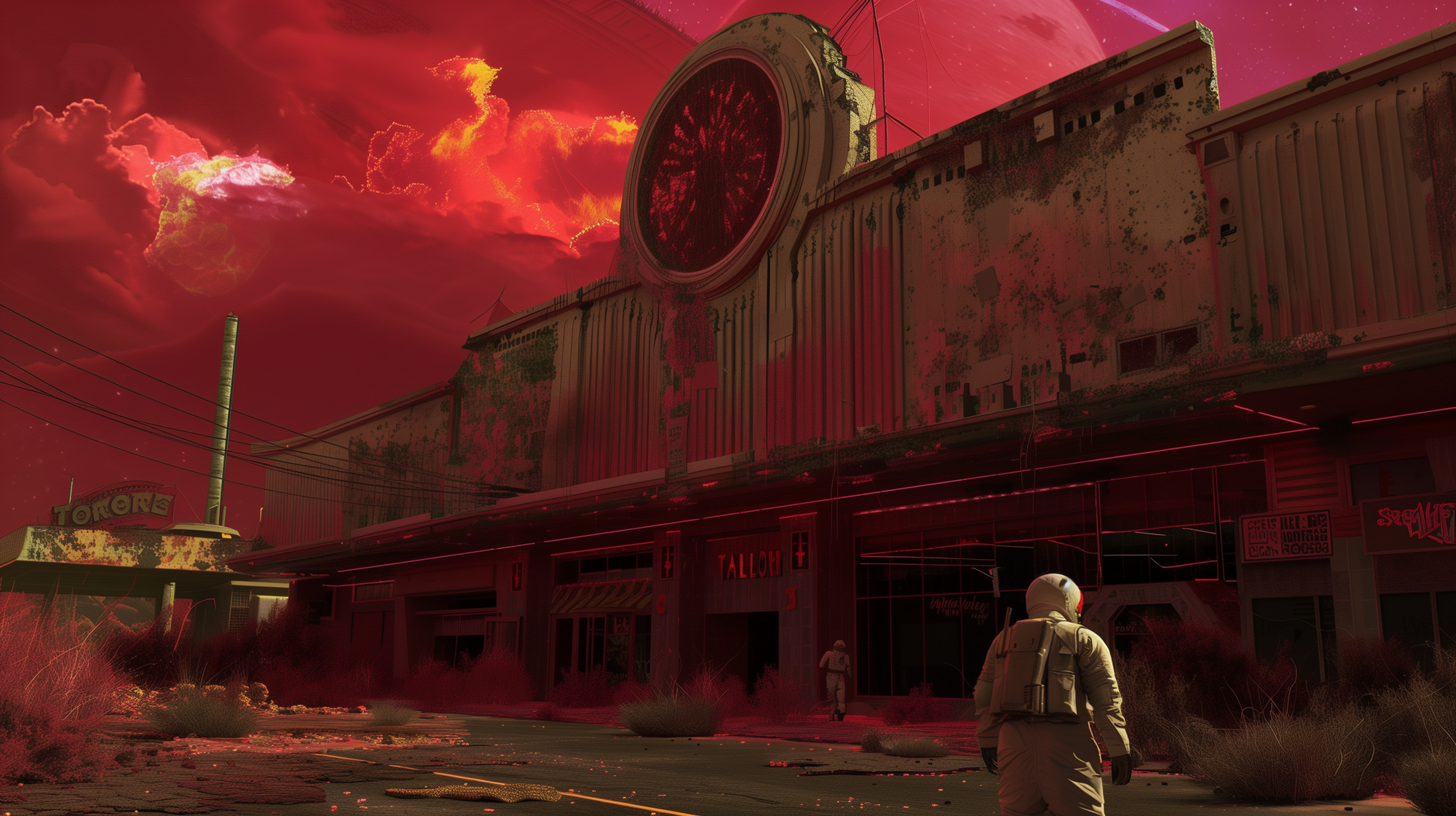
Why nukes happen frequently:
The frequency of nuke launches in Fallout 76 is a result of the game's multiplayer nature and the players' actions. As more players reach the endgame content and gain access to nuclear silos, the likelihood of nukes being launched increases. Additionally, players may choose to launch nukes repeatedly to farm rare resources or to create new challenges for themselves and others.
It's important to note that while the nuke mechanic is a significant part of Fallout 76's gameplay, it has also been a source of controversy and criticism. Some players argue that the frequent use of nukes can disrupt the game's balance and immersion, as the constant threat of nuclear annihilation may not feel consistent with the game's post-apocalyptic setting. Others have raised concerns about the potential for griefing, as players can target areas where others are exploring or building.
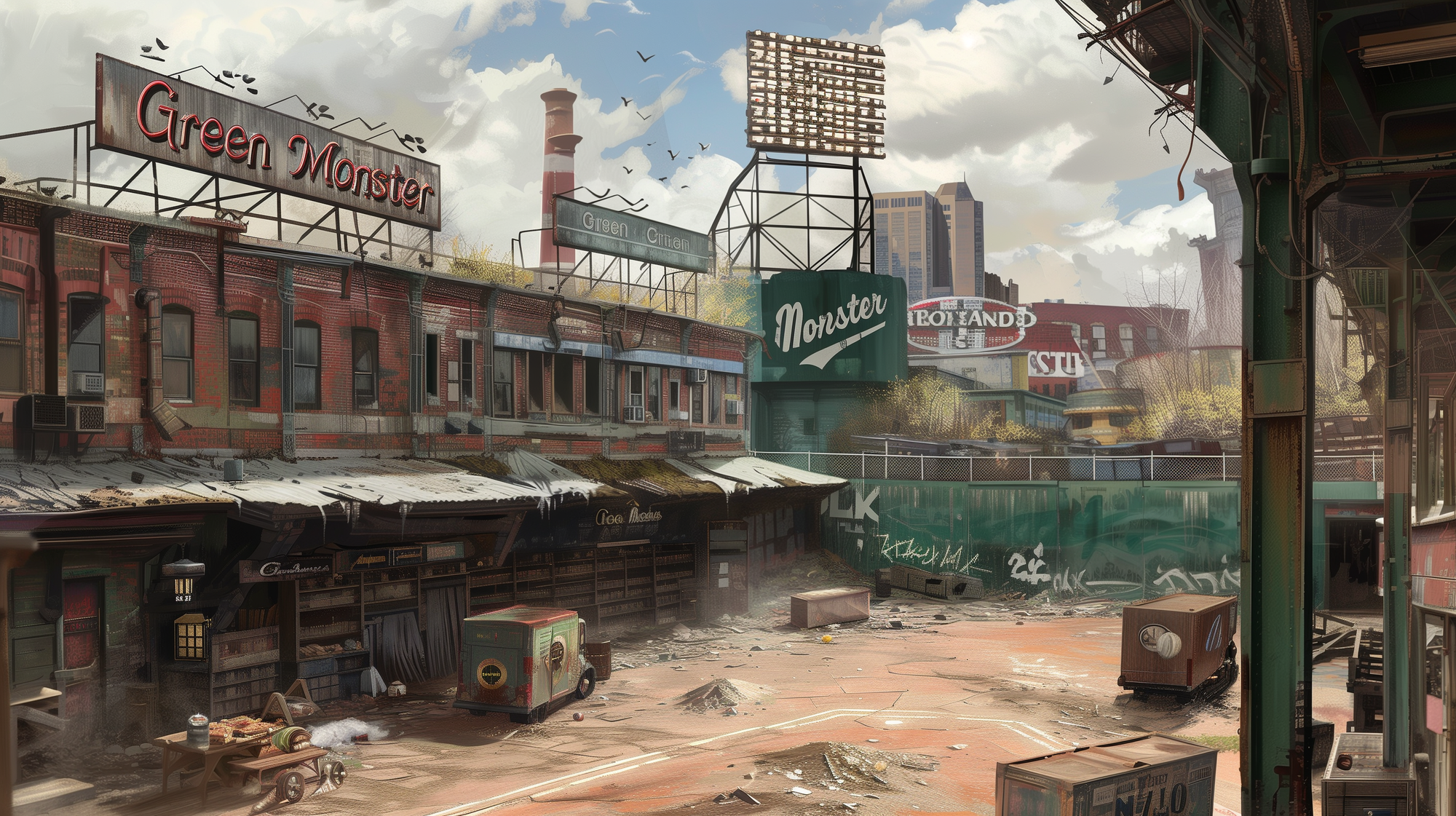
Despite these concerns, the nuke mechanic remains a unique and defining feature of Fallout 76, setting it apart from other games in the series and providing players with a high-stakes, end-game activity to pursue.
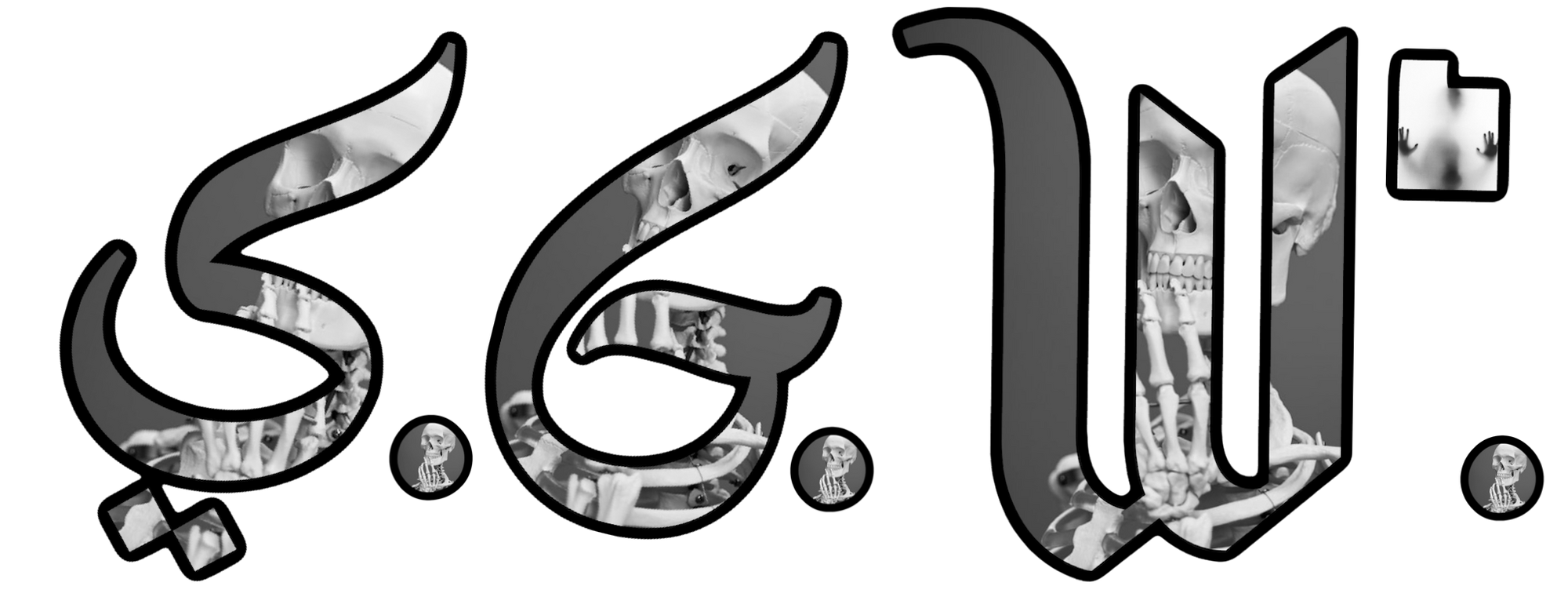
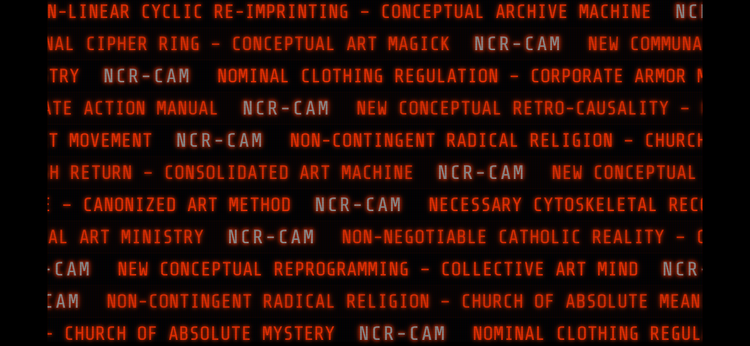


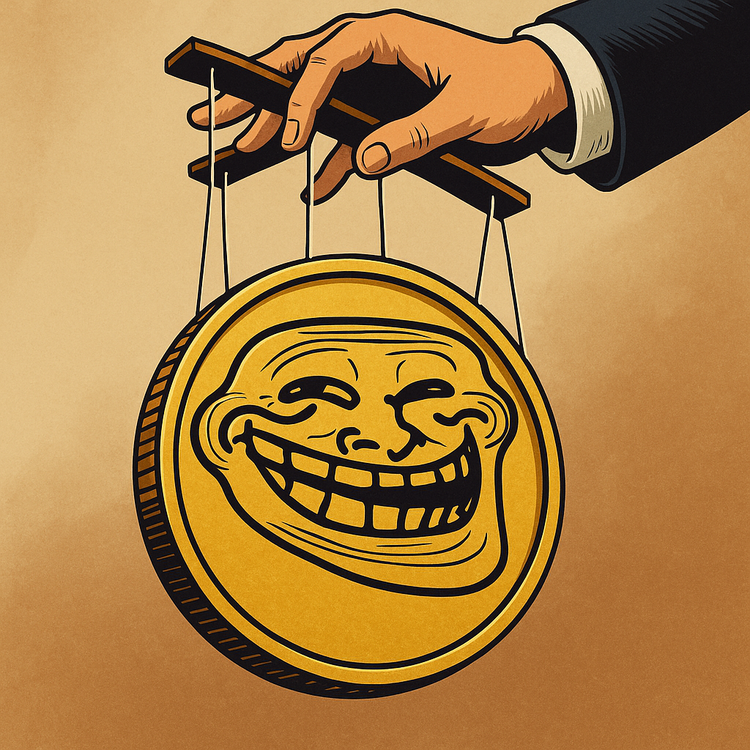

Member discussion